2018-04-19 - Nº 155
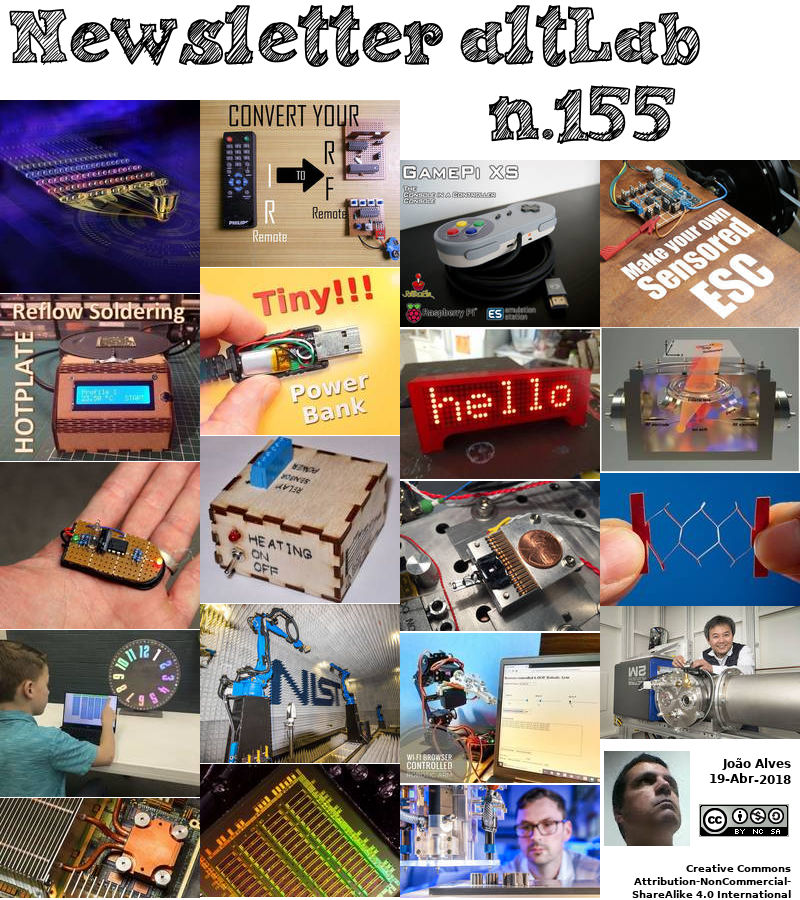
Editorial
Esta é a Newsletter Nº 155 que se apresenta com o mesmo formato que as anteriores. Se gostar da Newsletter partilhe-a!
Todas as Newsletters encontram-se indexadas no link.
Esta Newsletter tem os seguintes tópicos:
Faz hoje anos que nascia, em 1801, Gustav Theodor Fechner. Este físico e filósofo alemão que foi uma figura chave na fundação da psico-física, a ciência preocupada com as relações quantitativas entre as sensações e os estímulos que as produzem. Ele formulou a regra conhecida como a lei de Fechner, que, dentro de limites, a intensidade de uma sensação aumenta como o logaritmo do estímulo. Ele também propôs uma expressão matemática da teoria sobre a diferença entre dois estímulos, avançada por E. H. Weber.
Faz igualmente anos hoje que nascia, em 1877, Ole Evinrude. Este inventor norueguês e fabricante do motor marinho externo. Ole Evinrude estava a remar no seu pequeno barco um dia. Pareceu-lhe que o remo era mais difícil do que precisava, quando o seu objectivo era fazer um piquenique numa pequena ilha distante. Resolveu então e ali inventar um meio de mover pequenos barcos com rapidez e facilidade através da água. Quando descobriu uma maneira melhor, inventou o primeiro motor de popa prático em 1909. Ele patenteou-o em 1910; Rapidamente substituiu motores movidos a vapor e a pé por barcos e impulsionou uma nova indústria. O resultado foi o motor de popa Evinrude que permanece popular até hoje.
Faz também anos hoje que nascia, em 1880, Albert W. Hull. Este físico americano que descobriu independentemente o método de pó de análise de raios X de cristais (1917), que permite o estudo de materiais cristalinos num estado micro-cristalino finamente dividido, ou pó. O seu primeiro trabalho foi em tubos de electrões, cristalografia de raios X e piezoeletricidade. Na década de 1920, ele estudou medições de ruído em díodos e triodes. Nos anos 30, ele também se interessou pela metalurgia e pela ciência do vidro. A sua obra mais conhecida foi feita após a guerra, especialmente seu trabalho clássico sobre o efeito de um campo magnético uniforme no movimento de electrões entre cilindros coaxiais. Ele inventou também o magnetron (1921) e o thyratron (1927), e outros tubos de electrões com ampla aplicação como componentes em circuitos electrónicos.
Por fim, faz anos hoje que nascia, em 1912, Glenn T. Seaborg. Este químico nuclear americano durante 1940-58 com colegas seus da Universidade da Califórnia, Berkeley, produziram nove dos elementos transurânicos (plutónio ao nobélio) bombardeando urânio e outros elementos com núcleos num cíclotron. Ele cunhou o termo actinídeo para os elementos desta série. O trabalho sobre os elementos foi directamente relevante para o esforço da Segunda Guerra Mundial para desenvolver uma bomba atómica. Diz-se que ele foi influente na determinação da escolha do plutónio em vez do urânio nas primeiras experiências com bombas atómicas. Seaborg e seu antigo colaborador Edwin McMillan dividiram o Prémio Nobel da química de 1951. O elemento 106, seabórgio (1974), foi nomeado em sua homenagem.
Nesta semana que passou ficámos a saber que abriu na Suécia uma autoestrada especialmente construída para carregar veículos. São cerca de 2 km de estrada electrificada que incorporada numa via pública perto de Estocolmo. A tecnologia por detrás da electrificação da estrada que liga o aeroporto de Estocolmo Arlanda a um local de logística fora da capital visa resolver os problemas complicados de manter os veículos eléctricos carregados e o fabrico de suas baterias a preços acessíveis. A energia é transferida de dois trilhos do trilho na estrada por meio de um braço móvel preso na parte inferior de um veículo.
Ficámos igualmente a saber que um asteróide passou bastante perto da Terra. Um asteróide semelhante em tamanho a um que explodiu há mais de 100 anos na região russa de Tunguska, na Sibéria, passou relativamente próximo da Terra no domingo (15 de Abril), apenas um dia depois dos astrónomos descobrirem o objecto. O asteróide, designado 2018 GE3, teve mais próximo da Terra por volta das 2:41 am EDT (0641 GMT), a uma distância de 192.000 km, ou cerca de metade da distância média entre a Terra e a Lua. de acordo com o Centro de Estudos de Objectos Próximos à Terra da NASA (CNEOS). A NASA estimou que este asteróide mede de 48 a 110 metros de largura, fazendo com que seja até 3,6 vezes o tamanho do que derrubou 2000 quilómetros quadrados de floresta siberiana quando explodiu sobre Tunguska em 1908.
Na Newsletter desta semana apresentamos diversos projetos de maker assim como um conjunto de modelos 3D de coberturas de ventoinhas. São apresentados dois livros da Texas Instruments, um sobre ADCs e outro sobre Op-Amps. São também apresentados mais três livros sobre Transístores.
 João Alves ([email protected])
João Alves ([email protected])
O conteúdo da Newsletter encontra-se sob a licença  Creative Commons Attribution-NonCommercial-ShareAlike 4.0 International License.
Creative Commons Attribution-NonCommercial-ShareAlike 4.0 International License.
Novidades da Semana

World's first electrified road for charging vehicles opens in Sweden
"The world’s first electrified road that recharges the batteries of cars and trucks driving on it has been opened in Sweden. About 2km (1.2 miles) of electric rail has been embedded in a public road near Stockholm, but the government’s roads agency has already drafted a national map for future expansion. Sweden’s target of achieving independence from fossil fuel by 2030 requires a 70% reduction in the transport sector. The technology behind the electrification of the road linking Stockholm Arlanda airport to a logistics site outside the capital city aims to solve the thorny problems of keeping electric vehicles charged, and the manufacture of their batteries affordable. Energy is transferred from two tracks of rail in the road via a movable arm attached to the bottom of a vehicle. The design is not dissimilar to that of a Scalextric track, although should the vehicle overtake, the arm is automatically disconnected." [...]
Outras Notícias

Astrophysics CubeSat Demonstrates Big Potential in a Small Package
"The ASTERIA satellite, which was deployed into low-Earth orbit in November, is only slightly larger than a box of cereal, but it could be used to help astrophysicists study planets orbiting other stars. Mission managers at NASA's Jet Propulsion Laboratory in Pasadena, California, recently announced that ASTERIA has accomplished all of its primary mission objectives, demonstrating that the miniaturized technologies on board can operate in space as expected. This marks the success of one of the world's first astrophysics CubeSat missions, and shows that small, low-cost satellites could be used to assist in future studies of the universe beyond the solar system. "ASTERIA is small but mighty," said Mission Manager Matthew W. Smith of JPL. "Packing the capabilities of a much larger spacecraft into a small footprint was a challenge, but in the end we demonstrated cutting-edge performance for a system this size." Seeing Stars ASTERIA, or the Arcsecond Space Telescope Enabling Research in Astrophysics, weighs only 22 pounds (10 kilograms)." [...]
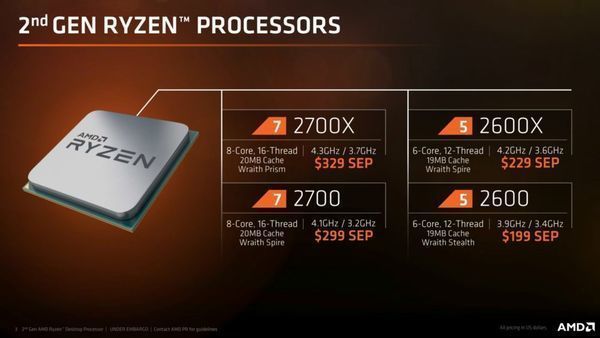
2nd Generation AMD Ryzen Processors: Ultimate Desktop CPUs for High-Performance Computing Available April 19 Worldwide
"2nd generation AMD Ryzen processor lineup offers world's highest multithreaded performance desktop processors in its class; immediate pre-order availability from more than 150 retailers and boutique PC manufacturers One year after the first release of the award-winning AMD Ryzen processors, AMD (NASDAQ: AMD) announced pre-orders begin today worldwide for the eagerly anticipated 2nd generation AMD Ryzen desktop processors, with disruptive levels of compute performance at each of four price points1. Delivering high-performance computing and innovative new features, 2nd gen Ryzen desktop processors are built to create faster and smoother computing experiences for PC gamers, creators, and hardware enthusiasts. “Second generation Ryzen desktop processors take everything that made the original Ryzen so groundbreaking and makes it better – great performance combined with advanced technology to deliver an amazing experience for the most demanding users,” said Jim Anderson, senior vice president and general manager, Computing and Graphics Group, AMD. For the first time, the entire line of 2nd gen Ryzen desktop processors include a world class AMD Wraith cooler inside the retail box. The AMD Ryzen 7 2700X CPU PIB includes the new Wraith Prism cooler, which offers improved thermal performance over the Wraith Max, a more compatible fan profile, and enhanced lighting capabilities with per-RGB controls. All 2nd gen AMD Ryzen desktop processors are supported by the new AMD X470 chipset, the most advanced, optimized, and efficient chipset to-date for socket AM4." [...]

'Tunguska'-Size Asteroid Makes Surprise Flyby of Earth
"An asteroid similar in size to one that exploded more than 100 years ago in Russia's Tunguska region in Siberia gave Earth a close shave on Sunday (April 15), just one day after astronomers discovered the object. The asteroid, designated 2018 GE3, made its closest approach to Earth at around 2:41 a.m. EDT (0641 GMT), whizzing by at a distance of 119,400 miles (192,000 kilometers), or about half the average distance between Earth and the moon, according to NASA's Center for Near Earth Object Studies (CNEOS). NASA estimated that this asteroid measures 157 to 360 feet (48 to110 meters) wide, making the space rock up to 3.6 times the size of the one that leveled 500,000 acres (2,000 square kilometers) of Siberian forest when it exploded over Tunguska in 1908. " [...]
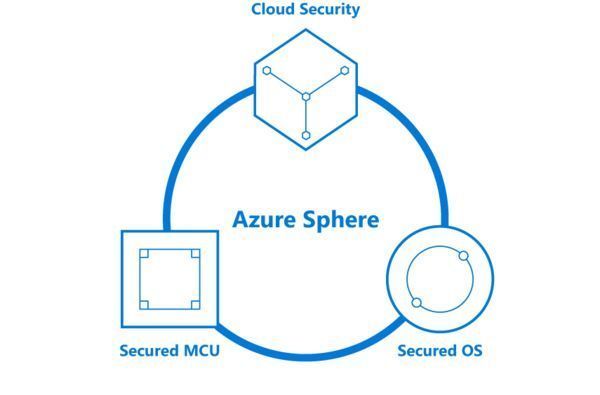
Introducing Microsoft Azure Sphere: Secure and power the intelligent edge
"In the next decade, nearly every consumer gadget, every household appliance, and every industrial device will be connected to the Internet. These connected devices will also become more intelligent with the ability to predict, talk, listen, and more. The companies who manufacture these devices will have an opportunity to reimagine everything and fundamentally transform their businesses with new product offerings, new customer experiences, and differentiate against competition with new business models. All these everyday devices have in common a tiny chip, often smaller than the size of your thumbnail, called a microcontroller (MCU). The MCU functions as the brain of the device, hosting the compute, storage, memory, and an operating system right on the device. Over 9 billion of these MCU-powered devices are built and deployed every year." [...]
Ciência e Tecnologia

Quantum physicists achieve entanglement record German-Austrian research team develop new detection method
"Entanglement is of central importance for the new quantum technologies of the 21st century. A German-Austrian research team is now presenting the largest entangled quantum register of individually controllable systems to date, consisting of a total of 20 quantum bits. The physicists in Innsbruck, Vienna and Ulm are pushing experimental and theoretical methods to the limits of what is currently possible. Some of the new quantum technologies ranging from extremely precise sensors to universal quantum computers require a large number of quantum bits in order to exploit the advantages of quantum physics. Physicists all over the world are therefore working on implementing entangled systems with more and more quantum bits. The record is currently held by Rainer Blatt's research group at the Institute of Experimental Physics at the University of Innsbruck." [...]

Chaos makes quantum sensors work more precisely
"Physicists at the University of Tübingen are developing a method for increasing the accuracy of high-precision sensors Quantum sensors already measure quantities such as temperature, magnetic field strength or accelerations very accurately. And they work even more precisely with chaotic dynamics. Physicists at the University of Tübingen showed this in a study in which they developed a method with which the measurement accuracy of high-precision sensors could be improved by a further 70 percent. Doctoral candidate Lukas Fiderer and Professor Daniel Braun from the Institute of Theoretical Physics used weak laser pulses in a computer simulation to disturb the dynamics of a magnetic field sensor. The results of the study were published in the journal Nature Communications. Quantum metrology is a field of metrology, the science of measurement." [...]
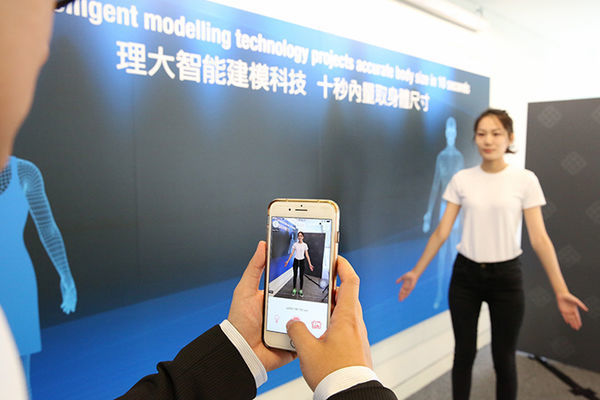
PolyU intelligent 3D human modelling technology projecting body shape and size accurately within 10 seconds
"Shopping well-fitting clothes online or making bespoke garments can be done more easily with the intelligent 3D human modelling technology developed by The Hong Kong Polytechnic University (PolyU), which digitally reconstructs the shape and size of a person accurately from two full body photographs within 5-10 seconds. With online shopping gaining popularity, this PolyU innovation, developed by Dr Tracy P.Y. Mok, Associate Professor from the Institute of Textiles and Clothing at PolyU, and Dr Zhu Shuaiyin, PhD graduate of the same institute, can solve the ill-fitting problem and enhance the online shopping experience. Existing methods to achieve automatic shape modeling and dynamic poses deformation, including scan-based, image-based and example-based have known limitations. They involve expensive and bulky scanners and too much approximation, and therefore are of questionable accuracy. Projecting body shape and size accurately in 5-10 seconds By integrating cutting-edge computer graphic and vision technology, this innovation allows a customised model in arbitrary dynamic poses to be created automatically within 5-10 seconds." [...]
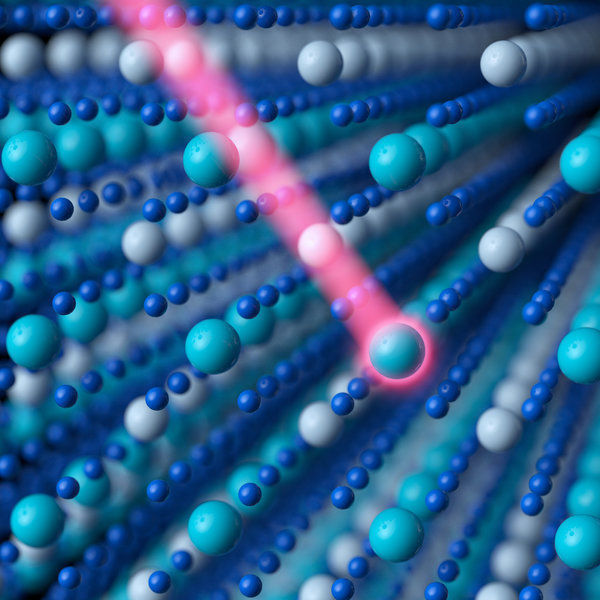
The Future of Ultrafast Solid-State Physics
"In an article that appears in the journal “Review of Modern Physics”, researchers at the Laboratory for Attosecond Physics (LAP) assess the current state of the field of ultrafast physics and consider its implications for future technologies. Physicists can now control light in both time and space with hitherto unimagined precision. This is particularly true for the ability to generate ultrashort light pulses in the infrared and visible regions of the spectrum. Extremely high-energy laser pulses, each lasting for a few femtoseconds, have made spectacular experiments possible, which have in turn yielded revolutionary insights. Above all, the growth in understanding of the interaction between light and electrons opens up entirely new prospects for the future of electronics. In the journal Review of Modern Physics (10 April 2018), Dr. Stanislav Kruchinin, Prof. Ferenc Krausz and Dr. Vladislav Yakovlev from the Laboratory for Attosecond Physics (which is jointly run by Ludwig-Maximilians-Universität (LMU) and the Max Planck Institute of Quantum Optics (MPQ)) in Munich, provide a timely overview of current research in ultrafast solid-state physics." [...]
Could holey silicon be the holy grail of electronics?
"UCI engineers find that innovative material facilitates effective on-chip cooling Electronics miniaturization has put high-powered computing capability into the hands of ordinary people, but the ongoing downsizing of integrated circuits is challenging engineers to come up with new ways to thwart component overheating. Scientists at the University of California, Irvine made a breakthrough recently in verifying a new material configuration to facilitate cooling. In a study in the journal Nanotechnology, members of UCI’s Nano Thermal Energy Research Group highlight the attributes of holey silicon, a computer chip wafer with tiny, vertically etched orifices that work to shuttle heat to desired locations. “We found that heat prefers to travel vertically through but not laterally across holey silicon, which means the material can effectively move the heat from local hot spots to on-chip cooling systems in the vertical direction while sustaining the necessary temperature gradient for thermoelectric junctions in the lateral direction,” said corresponding author Jaeho Lee, UCI assistant professor of mechanical & aerospace engineering. “This innovation could potentially be ideal for keeping electronic devices such as smartphones cool during operation,” said lead author Zongqing Ren, a graduate student researcher in the NTERG. He said that lab simulations demonstrated that the cooling effectiveness of holey silicon is at least 400 percent better than chalcogenides, compounds commonly used in thermoelectric cooling devices." [...]

UNH Researchers Find Combination For Small Data Storage and Tinier Computers
"It may sound like a futuristic device out of a spy novel, a computer the size of a pinhead, but according to new research from the University of New Hampshire, it might be a reality sooner than once thought. Researchers have discovered that using an easily made combination of materials might be the way to offer a more stable environment for smaller and safer data storage, ultimately leading to miniature computers. “We’re really optimistic about the possibilities,” said Jiadong Zang, assistant professor of physics. “There is a push in the computer industry toward smaller and more powerful storage, yet current combinations of materials can create volatile situations, where data can be lost once the device is turned off. Our research points to this new combination as a much safer option. We’re excited that our findings might have the potential to change the landscape of information technology.” In their study, recently published in the journal Science Advances, the researchers outline their proposed combination which would allow for a more stable perpendicular anisotropic energy (PMA), the key driving component in a computer’s RAM (random-access memory) or data storage." [...]
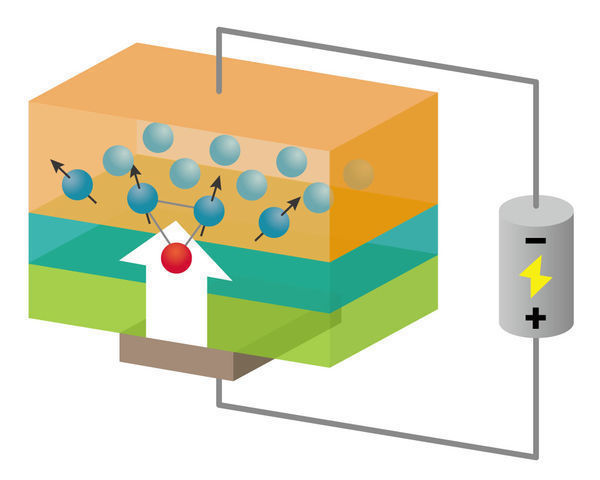
Anomalous and topological Hall effects can be controlled by an electric field
"Controlling the anomalous and topological Hall effects by applying an electric field could lead to new types of memory and logic devices Two magnetic phenomena that could be harnessed for memory or logic applications can be controlled by simply applying an electric field to suitably designed structures, RIKEN researchers have shown1. The Hall effect was discovered in 1879 by Edwin Hall, who realized that applying a magnetic field at right angles to an electric current causes the flowing electrons to veer in the direction perpendicular to both the applied magnetic field and the current, creating a voltage in that direction. In ferromagnetic materials, the Hall effect can occur even without applying a magnetic field; in this case, it is called the anomalous Hall effect. Furthermore, in certain materials, local magnetic moments arrange themselves into stable vortex-like configurations known as skyrmions, and the fictitious magnetic field produced by the skyrmions gives rise to an analogous phenomenon known as the topological Hall effect. Both the anomalous and topological Hall effects arise due to the strong coupling between the spin and orbital angular momenta of electrons in some materials. Inspired by the recent observation of the topological Hall effect in structures consisting of SrRuO3 and SrIrO3, Jobu Matsuno from the RIKEN Center for Emergent Matter Science and his co-workers explored the effect of applying an electric field in heterostructures composed of these materials." [...]
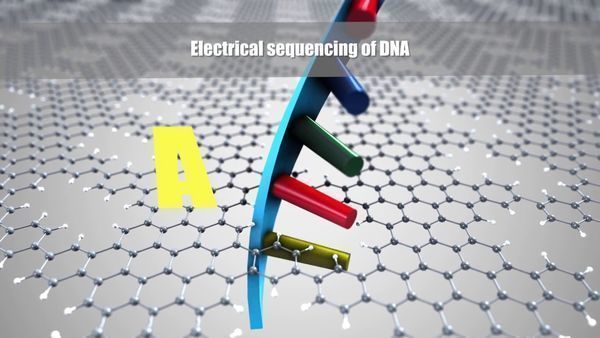
One step closer to using nanoporous graphene in smart filters and sensors
"As part of a national research collaboration, Spanish researchers including the ICN2 have made uniformly nanoporous graphene a practicable reality. A major milestone in graphene research, this brings us one step closer to unlocking this wonder material’s full potential not only in electronics, but also in filtration and sensing applications. Presented this morning to journalists at a press conference at the Barcelona Institute of Science and Technology, the work is published in Science. esearchers at the Catalan Institute of Nanoscience and Nanotechnology (ICN2), the CiQUS research centre at the University of Santiago de Compostela (USC) and the Donostia International Physics Center (DIPC) have successfully synthesised a graphene membrane with pores whose size, shape and density can be tuned with atomic precision at the nanoscale. Led by ICREA Prof. Aitor Mugarza from the ICN2 and Prof. Diego Peña from CiQUS, their work brings us one step closer to unlocking the potential of this much lauded material in electronics, and in filtration and sensing applications. Published this week in Science with ICN2 researcher Dr. César Moreno as first author, a press conference was held this morning at the Barcelona Institute of Science and Technology (BIST), with additional presence of Prof. Aran Garcia-Lekue representing the DIPC." [...]
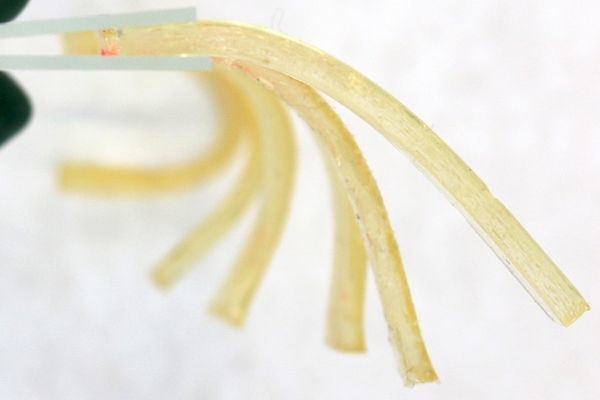
Polymer synthesis gets a jolt of caffeine
"Caffeine is well-known for its ability to help people stay alert, but a team of researchers at MIT and Brigham and Women’s Hospital has now come up with a novel use for this chemical stimulant — catalyzing the formation of polymer materials. Using caffeine as a catalyst, the researchers have devised a way to create gummy, biocompatible gels that could be used for drug delivery and other medical applications. “Most synthetic approaches for synthesizing and cross-linking polymeric gels and other materials use catalysts or conditions that can damage sensitive substances such as biologic drugs. In contrast, here we used green chemistry and common food ingredients,” says Robert Langer, the David H. Koch Institute Professor at MIT and one of the study’s senior authors. “We believe these new materials could be useful in creating new medical devices and drug delivery systems.” In their paper, which appears the journal Biomaterials, the researchers demonstrated that they could load the gels with two antimalarial drugs, and they expect the material could also be used to carry other types of drugs. Drugs carried by this kind of material could be chewable or easier to swallow, the researchers say." [...]
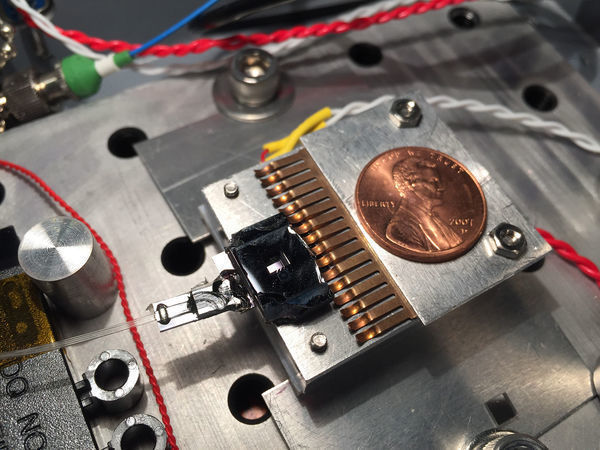
Mini Toolkit for Measurements: New NIST Chip Hints at Quantum Sensors of the Future
"Researchers at the National Institute of Standards and Technology (NIST) have created a chip on which laser light interacts with a tiny cloud of atoms to serve as a miniature toolkit for measuring important quantities such as length with quantum precision. The design could be mass-produced with existing technology. As described in Optica (link is external), NIST’s prototype chip was used to generate infrared light at a wavelength of 780 nanometers, precisely enough to be used as a length reference for calibrating other instruments. The NIST chip packs the atom cloud and structures for guiding light waves into less than 1 square centimeter, about one ten-thousandth of the volume of other compact devices offering similar measurement precision. “Compared to other devices that use chips for guiding light waves to probe atoms, our chip increases the measurement precision a hundredfold,” NIST physicist Matt Hummon said. “Our chip currently relies on a small external laser and optics table, but in future designs, we hope to put everything on the chip.” Many devices use light to probe the quantum states of atoms in a vapor confined in a small cell." [...]
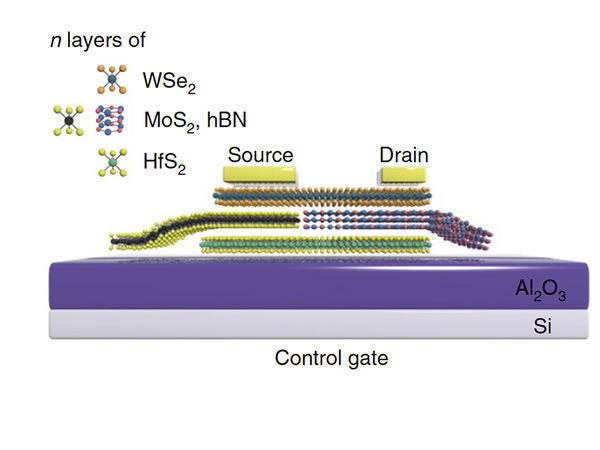
"Quasi-Non-Volatile" Memory Looks to Fill Gap Between Volatile and Non-Volatile Memory
"2D materials produce a semi-floating gate memory that falls somewhere between DRAM and SRAM Researchers at Fudan University in Shanghai, China have leveraged two-dimensional (2D) materials to fabricate a relatively new gate design for transistors that may fill the gap between volatile and non-volatile memory. The result is what the researchers are dubbing a “quasi-non-volatile” device that combines the benefits of static random access memory (SRAM) and dynamic random access memory (DRAM). The new device will make up for DRAM’s limited data retention ability and its need to be frequently refreshed and SRAM’s high cost. In research described in Nature Nanotechnology, the Chinese researchers leveraged a gate design that has been gaining popularity, recently called semi-floating gate (SFG) memory technology. The SFG gate design is similar to a typical field effect transistor except that SFG transistor can “remember” the applied voltage from the gate. The researchers have shown that the 2D SFG memory they have fabricated has 156 times longer refresh time (10 seconds) than DRAM (64 milliseconds), which saves power, and ultrahigh-speed writing operations on nanosecond timescales (15 nanoseconds), which puts it on par with DRAM (10 nanoseconds)." [...]

Researchers develop more comprehensive acoustic scene analysis method
"Researchers have demonstrated an improved method for audio analysis machines to process our noisy world. Their approach hinges on the combination of scalograms and spectrograms—the visual representations of audio—as well as convolutional neural networks (CNNs), the learning tool machines use to better analyze visual images. In this case, the visual images are used to analyze audio to better identify and classify sound. The team published their results in the journal IEEE/CAA Journal of Automatica Sinica (JAS), a joint publication of the IEEE and the Chinese Association of Automation. "Machines have made great progress in the analysis of speech and music, but general sound analysis has been lagging a big behind—usually, mostly isolated sound 'events' such as gun shots and the like have been targeted in the past," said Björn Schuller, a professor and chair of Embedded Intelligence for Health Care and Wellbeing at the University of Augsburg in Germany, who led the research. "Real-world audio is usually a highly blended mix of different sound sources—each of which have different states and traits."" [...]
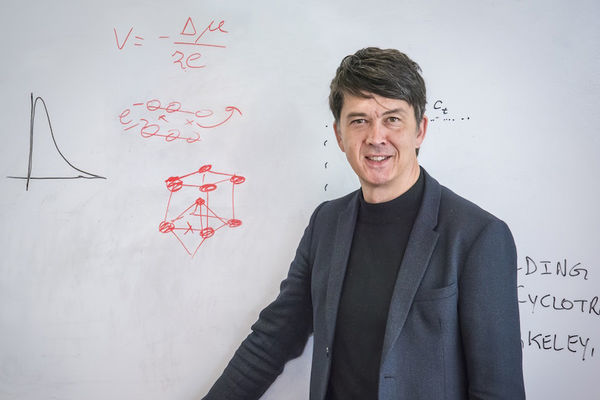
New technology could wean the battery world off cobalt
"ithium-based batteries use more than 50 percent of all cobalt produced in the world. These batteries are in your cell phone, laptop and maybe even your car. About 50 percent of the world’s cobalt comes from the Congo, where it’s largely mined by hand, in some instances by children. But now, a research team led by scientists at the University of California, Berkeley, has opened the door to using other metals in lithium-based batteries, and have built cathodes with 50 percent more lithium-storage capacity than conventional materials. “We’ve opened up a new chemical space for battery technology,” said senior author Gerbrand Ceder, professor in the Department of Materials Science and Engineering at Berkeley. “For the first time we have a really cheap element that can do a lot of electron exchange in batteries.” The study will be published in the April 12 edition of the journal Nature." [...]

Fast! Hard X-Ray Flash Breaks Speed Record
"Lasting just a few hundred billionths of a billionth of a second, these bursts offer new tool to study chemistry and magnetism. The Science Reactions in solar panels, catalytic converters, and other devices are governed by the quick motion of electrons. To capture the movement of these electrons, scientists use pulses of extremely high energy x-rays. The challenge is making the pulses short enough to get a good look at the electrons. Now, the shortest-ever pulses of hard x-rays were produced using two methods developed at SLAC’s Linac Coherent Light Source. The pulse duration is just a few hundred attoseconds long, or billionths of a billionth of a second." [...]
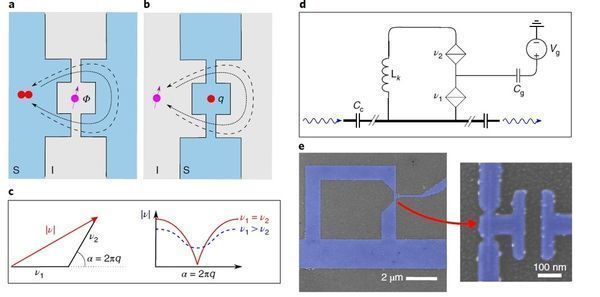
A universal design for superconducting qubits has been created
"An international group of scientists from Russia, the United Kingdom, and Germany have presented an alternative qubit design which can be used to build a quantum computer. Nano-wires made of superconductors are the design’s main elements. In the first experiments, the new superconductor qubit proved to be no worse than the traditional one built on Josephson junctions. The collaboration of scientists from the Russian Quantum Center and NUST MISIS in Russia, the University of London and the National Physical Laboratory in Teddington in the United Kingdom, and the Karlsruhe Institute of Technology and IPHT Jena in Germany, as well as contributions from MIPT and Skoltech (Russia), has managed to create a fundamentally new qubit based not on the Josephson transition, which has gaps in the superconductor, but on a continuous superconducting nano-wire. The research has been published in Nature Physics. Scientists expect quantum computers to achieve landmarks." [...]
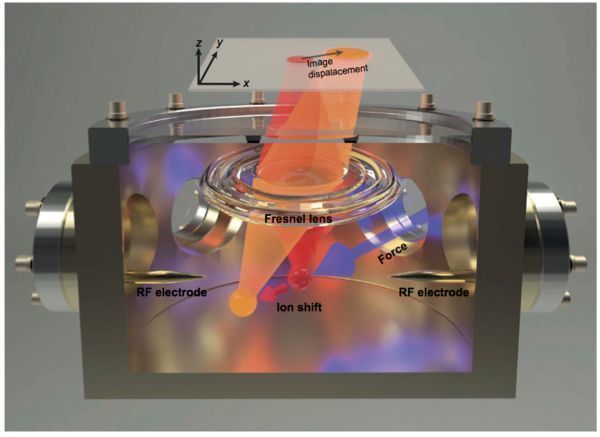
3D single-atom force sensor goes sub-attonewton
"A 3D force sensor that can image single trapped ions with a resolution on the sub-attonewton scale could be used in a number of practical areas, including as a probe to detect the electric fields surrounding biomolecules and nanoparticles, and to investigate surface properties. The new sensor is very similar to a recently demonstrated atomic microscope force sensor but it has a substantially higher density and potential for further improvement. Measuring force with high sensitivity is important for investigating the fundamental physics of magnetic, atomic, quantum and surface phenomena. It is also important for precisely measuring physical quantities, such as the effect of gravity on time in the theory of general relativity. In recent years, researchers have developed high-resolution imaging techniques based on laser-cooled trapped ions that have opened up the possibility of making ion-based sensors that could resolve an external force in three directions using a single atomic ion. This is thanks to Hooke’s Law Fi=kiΔxi, which allows to convert displacement measurements Δxi into a force measurement Fi through the associated spring constants ki." [...]
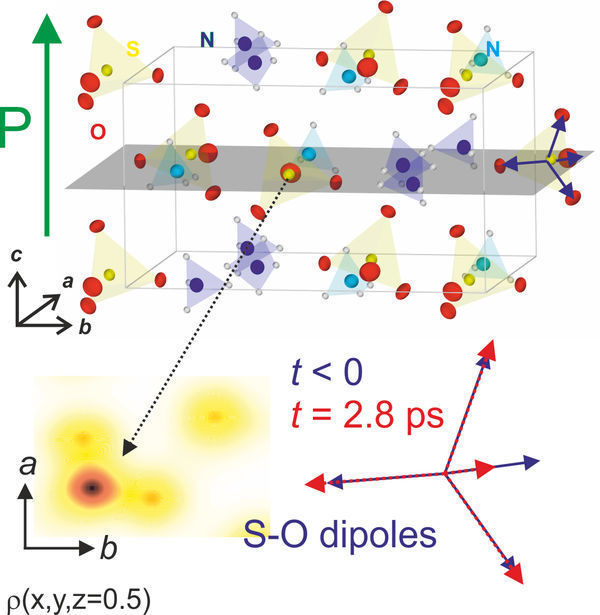
Wiggling atoms switch the electric polarization of crystals
"Ferroelectric crystals display a macroscopic electric polarization, a superposition of many dipoles at the atomic scale which originate from spatially separated electrons and atomic nuclei. The macroscopic polarization is expected to change when the atoms are set in motion but the connection between polarization and atomic motions has remained unknown. A time-resolved x-ray experiment now elucidates that tiny atomic vibrations shift negative charges over a 1000 times larger distance between atoms and switch the macroscopic polarization on a time scale of a millionth of a millionth of a second. Ferroelectric materials have received strong interest for applications in electronic sensors, memories, and switching devices. In this context, fast and controlled changes of their electric properties are essential for implementing specific functions efficiently. This calls for understanding the connection between atomic structure and macroscopic electric properties, including the physical mechanisms governing the fastest possible dynamics of macrosopic electric polarizations." [...]
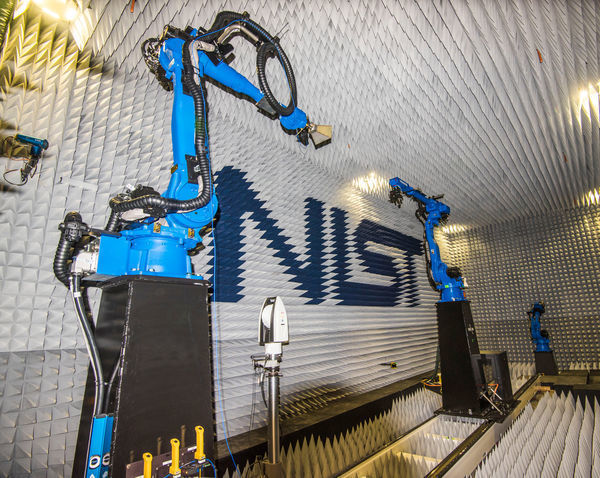
Two Robots Are Better than One for NIST's 5G Antenna Measurement Research
"Researchers at the National Institute of Standards and Technology (NIST) continue to pioneer new antenna measurement methods, this time for future 5G wireless communications systems. NIST’s new Large Antenna Positioning System (LAPS) has two robotic arms designed to position "smart" or adaptable antennas, which can be mounted on base stations that handle signals to and from huge numbers of devices. Future 5G systems will operate at higher frequencies and offer more than 100 times the data-carrying capacity of today’s cellphones, while connecting billions of mobile broadband users in complex, crowded signal environments. Among its many special capabilities, the LAPS can test transmissions to and from antennas located on fast-moving mobile devices, which requires coordination between the timing of communication signals and robot motion. “Measurements of antenna signals are a great use for robotics,” NIST electronics engineer Jeff Guerrieri said. “The robotic arms provide antenna positioning that would be constrained by conventional measurement systems.” NIST researchers are still validating the performance of the LAPS and are just now beginning to introduce it to industry." [...]
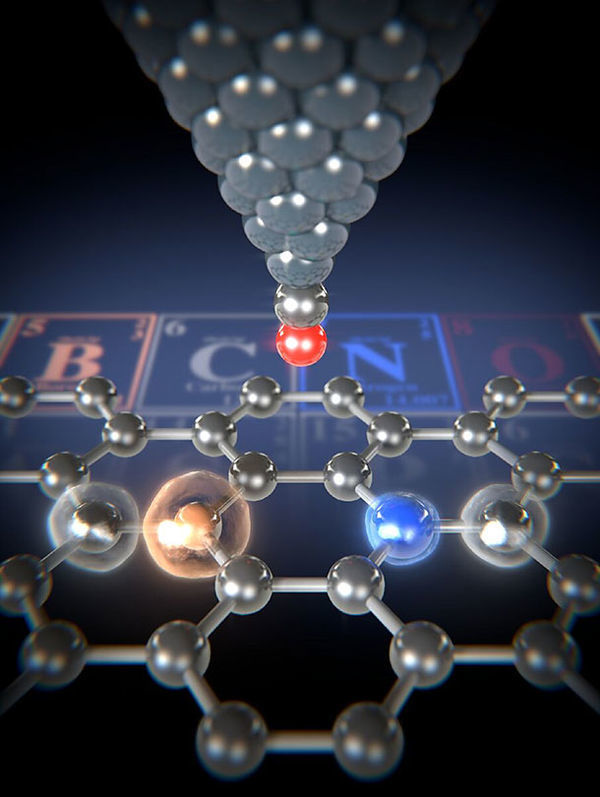
Individual impurity atoms detectable in graphene
"A team including physicists from the University of Basel has succeeded in using atomic force microscopy to clearly obtain images of individual impurity atoms in graphene ribbons. Thanks to the forces measured in the graphene’s two-dimensional carbon lattice, they were able to identify boron and nitrogen for the first time, as the researchers report in the journal Science Advances. Graphene is made of a two-dimensional layer of carbon atoms arranged in a hexagonal lattice. The strong bonds between the carbon atoms make graphene extremely stable yet flexible. It is also an excellent electrical conductor through which electricity can flow with almost no loss. Graphene’s distinctive properties can be further expanded by incorporating impurity atoms in a process known as “doping”." [...]
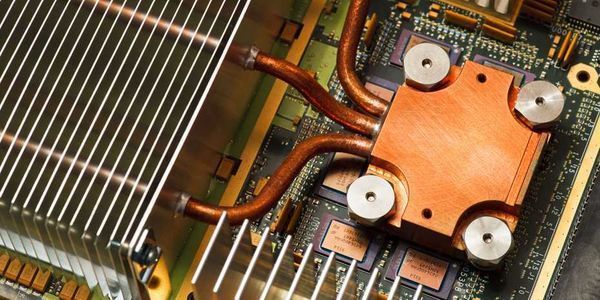
The thermodynamics of computing
"Information processing requires a lot of energy. Energy-saving computer systems could make computing more efficient, but the efficiency of these systems can’t be increased indefinitely, as ETH physicists show. As steam engines became increasingly widespread in the 19th century, the question soon arose as to how to optimise them. Thermodynamics, the physical theory that resulted from the study of these machines, proved to be an extremely fruitful approach; it is still a central concept in the optimisation of energy use in heat engines. Heat is a critical factor Even in today’s information age, physicists and engineers hope to make use of this theory; it is becoming ever clearer that the clock rate or the number of chips used are not the limiting factors for a computer’s performance, but rather its energy turnover. “The performance of a computing centre depends primarily on how much heat can be dissipated,” says Renato Renner, Professor for Theoretical Physics and head of the research group for Quantum Information Theory." [...]
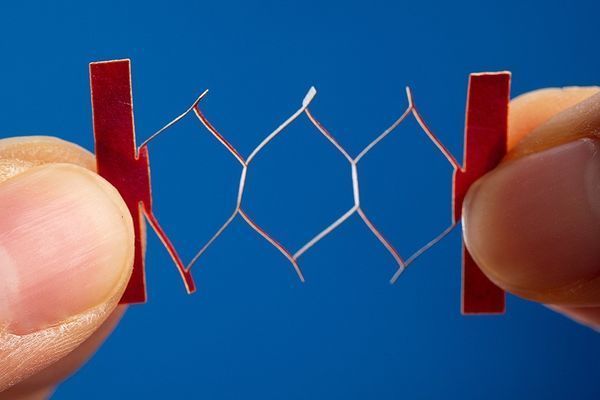
Variation of origami poised to improve smart clothing
"Like a yoga novice, electronic components don’t stretch easily. But that’s changing, thanks to a variation of origami that involves cutting folded pieces of paper. In a study published April 2 in the journal Advanced Materials, a UB-led research team describes how kirigami has inspired its efforts to build malleable electronic circuits. Their innovation — creating tiny sheets of strong, yet bendable electronic materials made of select polymers and nanowires — could lead to improvements in smart clothing, electronic skin and other applications that require pliable circuitry. “Traditional electronics, like the printed circuit boards in tablets and other electronic devices, are rigid. That’s not a good match for the human body, which is full of bends and curves, especially when we are moving,” says lead author Shenqiang Ren, professor in the Department of Mechanical and Aerospace Engineering." [...]
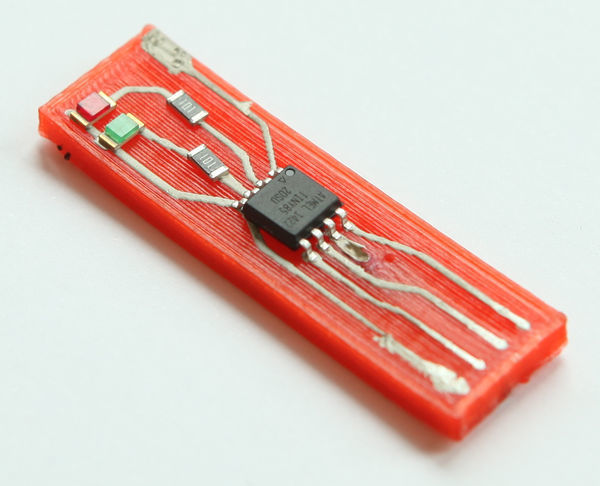
Conductive Printing Project
"The conductive printing project is an ongoing research topic, aiming at the full integration of complex electronic circuits into 3D-printed objects. 3D-Electronics, an augmented version of the slicing tool Slic3r is under active development. The electronics extension allows to load a schematic definition, created with CadSoft EAGLE, into the toolpath generated by Slic3r. SMD-components and wires can be arranged and routed in an object and the result is exported as gcode, printable with most FDM-printers. All informations for automatic component placement with OctoPNP are integrated into the gcode. Electronics for Slic3r is published under a GPLv3 licence and available on Github: https://github.com/platsch/Slic3r/tree/electronics." [...]
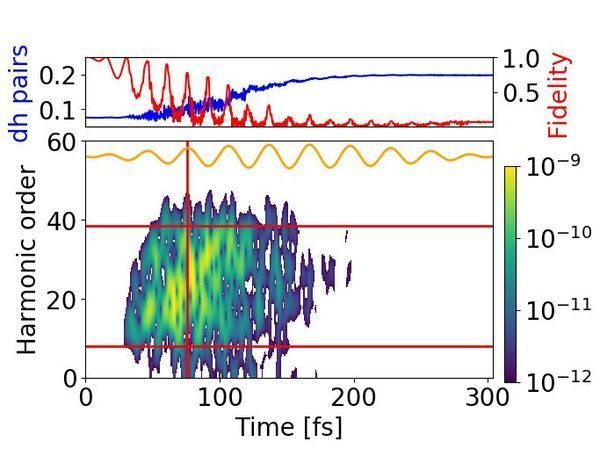
From insulator to conductor in a flash
"A clever combination of novel technologies enables us to study promising materials for the electronics of tomorrow. Over the past decades, computers have become faster and faster and hard disks and storage chips have reached enormous capacities. But this trend cannot continue forever: we are already running up against physical limits that will prevent silicon-based computer technology from attaining any impressive speed gains from this point on. Researchers are particularly optimistic that the next era of technological advancements will start with the development of novel information-processing materials and technologies that combine electrical circuits with optical ones. Using short laser pulses, a research team led by Misha Ivanov of the Max Born Institute in Berlin together with scientists from the Russian Quantum Center in Moscow have now shed light on the extremely rapid processes taking place within these novel materials. Their results have appeared in the prestigious journal “Nature Photonics”." [...]
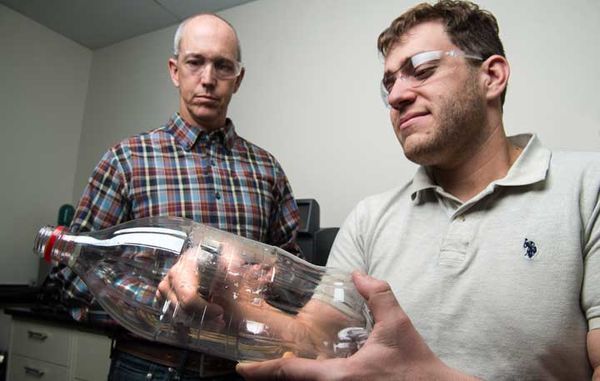
Research Team Engineers a Better Plastic-Degrading Enzyme
"A breakthrough in enzyme research led by the U.S. Department of Energy’s National Renewable Energy Laboratory (NREL) and the United Kingdom’s University of Portsmouth has led to an improved variant of an enzyme that can break down ubiquitous plastic bottles made of polyethylene terephthalate, or PET. While working to solve the crystal structure of PETase—a recently discovered enzyme that digests PET—the team inadvertently engineered an enzyme to be even better at degrading the man-made substance. Although the improvement is modest, this unanticipated discovery suggests that there is much more room to further improve these enzymes, moving scientists closer to solving the problem of an ever-growing amount of discarded plastics that take centuries to biodegrade. The paper, “Characterization and engineering of a plastic-degrading aromatic polyesterase,” was published this week in the Proceedings of the National Academy of Sciences (PNAS). The lead authors from the research team—NREL’s Gregg Beckham, University of Portsmouth’s John McGeehan, and Lee Woodcock from the University of South Florida—were attempting to understand how PETase evolved from likely working on natural substances to digesting synthetic materials when the serendipitous discovery was made. The urgency of this work is as striking as the images pulled from recent headlines: 8 million metric tons of plastic waste, including PET bottles, enter the oceans each year, creating huge man-made islands of garbage." [...]
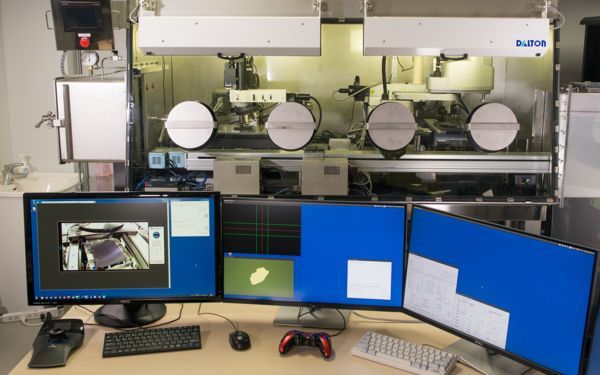
Robot Developed for Automated Assembly of Designer Nanomaterials
"A current area of intense interest in nanotechnology is van der Waals heterostructures, which are assemblies of atomically thin two-dimensional (2D) crystalline materials that display attractive conduction properties for use in advanced electronic devices. A representative 2D semiconductor is graphene, which consists of a honeycomb lattice of carbon atoms that is just one atom thick. The development of van der Waals heterostructures has been restricted by the complicated and time-consuming manual operations required to produce them. That is, the 2D crystals typically obtained by exfoliation of a bulk material need to be manually identified, collected, and then stacked by a researcher to form a van der Waals heterostructure. Such a manual process is clearly unsuitable for industrial production of electronic devices containing van der Waals heterostructures Now, a Japanese research team led by the Institute of Industrial Science at The University of Tokyo has solved this issue by developing an automated robot that greatly speeds up the collection of 2D crystals and their assembly to form van der Waals heterostructures. The robot consists of an automated high-speed optical microscope that detects crystals, the positions and parameters of which are then recorded in a computer database." [...]
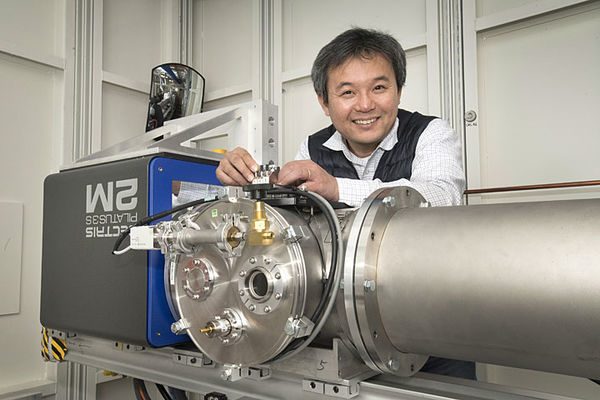
Researchers Engineer New Pathways for Self-Assembled Nanostructures
" One way that scientists control the structure of materials at the nanoscale – where features are a few to several hundred nanometers (nm) – is by using “self-assembly,” in which molecules are designed such that they spontaneously come together to form a desired structure or pattern. Self-assembly is a powerful approach to controlling order at the nanoscale and is one way that scientists can design certain properties into a material for specific applications, such as solar energy conversion and storage. Self-assembly is driven mainly by the system’s desire to minimize its energy and achieve equilibrium, but kinetic effects – the natural forces that move atoms and molecules around – can also play a strong role. Typically, these effects are viewed as complications to be overcome, but a collaboration of researchers from the U.S. Department of Energy’s (DOE) Brookhaven National Laboratory, Yale University, and the University of Warsaw (Poland) has recently shown that these effects can be exploited to engineer a nanostructure in a polymer thin film. Their results are published in the December 6, 2017 online edition of the journal Nanoscale. The group worked with a type of polymer known as a block copolymer." [...]
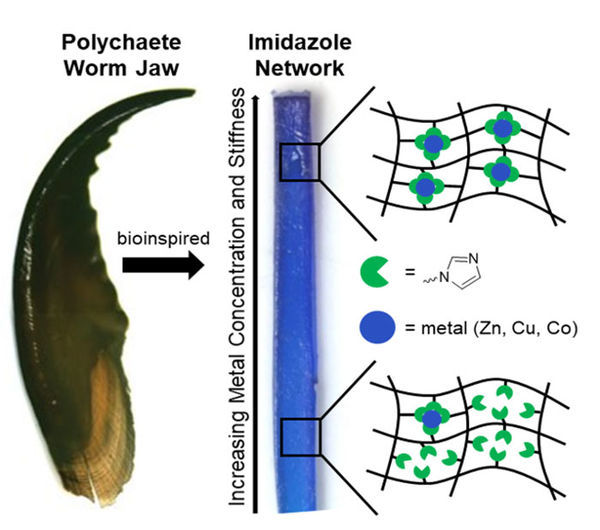
Worm-Inspired Tough Materials
"Known as the polychaete worm, it uses the tip of its jaw to inject lethal venom. The design of the jaw, with a gradient of hard materials at the tip connected to softer tissues, dissipates force and prevents serious damage to the jaw. The gradient in mechanical properties is correlated to the number of metal ions available for bonding. This mechanism inspired a novel approach to generate stiffness gradients in human-made polymers. Through a simple process, scientists controlled the density of the metal ions along a sample. The gradient in metal ion interactions created a continuous gradient in mechanical properties that spanned over a 200-fold change in stiffness, approaching that of biology." [...]
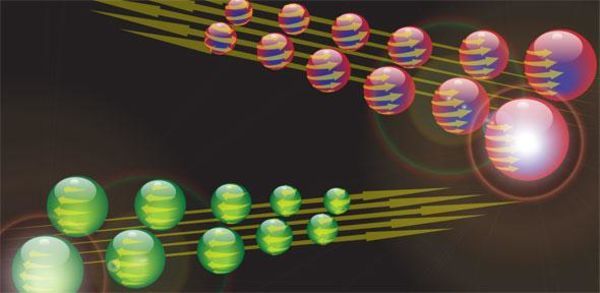
Some superconductors can also carry currents of 'spin'
"Researchers have shown that certain superconductors – materials that carry electrical current with zero resistance at very low temperatures – can also carry currents of ‘spin’. The successful combination of superconductivity and spin could lead to a revolution in high-performance computing, by dramatically reducing energy consumption. Spin is a particle’s intrinsic angular momentum, and is normally carried in non-superconducting, non-magnetic materials by individual electrons. Spin can be ‘up’ or ‘down’, and for any given material, there is a maximum length that spin can be carried. In a conventional superconductor electrons with opposite spins are paired together so that a flow of electrons carries zero spin. A few years ago, researchers from the University of Cambridge showed that it was possible to create electron pairs in which the spins are aligned: up-up or down-down." [...]
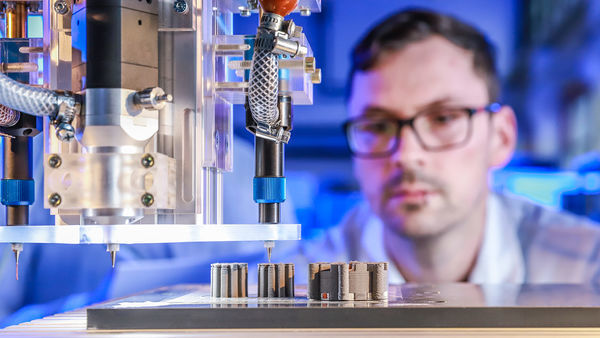
Premiere at Hannover Messe: Fully 3D-Printed Electric Motors
"Chemnitz University electrical engineers are the first in the world to print electric motors using iron, copper and ceramics Using metallic and ceramic pastes, extruded layer by layer into a predetermined form and then sintered together, researchers from the Chemnitz University of Technology Professorship of Electrical Energy Conversion Systems and Drives were able to 3D-print an entire electric motor. “We will present this innovation, the first of its kind in the world, at the ‘Hannover Messe 2018’ trade fair,” reports Prof. Dr. Ralf Werner, head of the Professorship. Last year, two members of his academic staff, Johannes Rudolph and Fabian Lorenz, presented a 3D-printed coil capable of withstanding temperatures over 300°C. Since that time, they have successfully printed all important components of an electrical machine. This includes copper electrical conductors, which create magnetic fields in combination with iron or iron alloys and ceramic electrical insulation, which insulates the conductors from each other and from the iron components, referred to as the magnetic circuit. “Our goal over the last two and a half years was to dramatically increase the temperature that electrical machines are capable of withstanding,” reports Werner." [...]

NIST Issues First Call for 'Lightweight Cryptography' to Protect Small Electronics
"Cryptography experts at the National Institute of Standards and Technology (NIST) are kicking off an effort to protect the data created by innumerable tiny networked devices such as those in the “internet of things” (IoT), which will need a new class of cryptographic defenses against cyberattacks. Creating these defenses is the goal of NIST’s lightweight cryptography initiative, which aims to develop cryptographic algorithm standards that can work within the confines of a simple electronic device. Many of the sensors, actuators and other micromachines that will function as eyes, ears and hands in IoT networks will work on scant electrical power and use circuitry far more limited than the chips found in even the simplest cell phone. Similar small electronics exist in the keyless entry fobs to newer-model cars and the Radio Frequency Identification (RFID) tags used to locate boxes in vast warehouses. All of these gadgets are inexpensive to make and will fit nearly anywhere, but common encryption methods may demand more electronic resources than they possess. Today, NIST is launching an effort to create worthy solutions to the problem of securing data in this sort of constrained environment." [...]
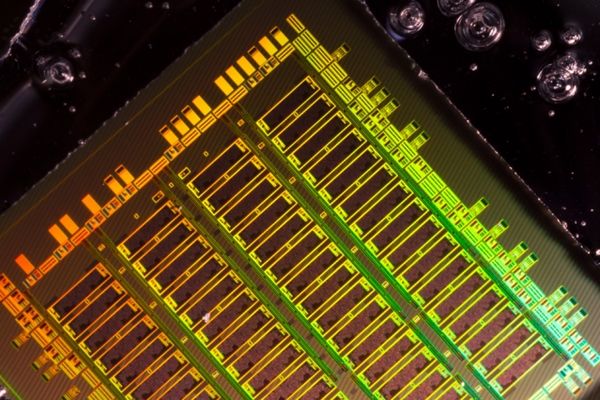
Integrating optical components into existing chip designs
"Technique would allow addition of optical communication components to existing chips with little modification of their designs. Two and a half years ago, a team of researchers led by groups at MIT, the University of California at Berkeley, and Boston University announced a milestone: the fabrication of a working microprocessor, built using only existing manufacturing processes, that integrated electronic and optical components on the same chip. The researchers’ approach, however, required that the chip’s electrical components be built from the same layer of silicon as its optical components. That meant relying on an older chip technology in which the silicon layers for the electronics were thick enough for optics. In the latest issue of Nature, a team of 18 researchers, led by the same MIT, Berkeley, and BU groups, reports another breakthrough: a technique for assembling on-chip optics and electronic separately, which enables the use of more modern transistor technologies. Again, the technique requires only existing manufacturing processes." [...]
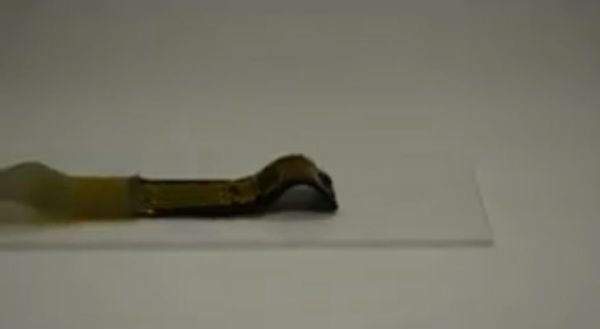
Researchers Design 'Soft' Robots that Can Move on Their Own
"Using Sensors, Actuators and Artificial Muscle, Robots Could Be Used in Medicine, Rescue and Defense If Star Wars’ R2-D2 is your idea of a robot, think again. Researchers led by a University of Houston engineer have reported a new class of soft robot, composed of ultrathin sensing, actuating electronics and temperature-sensitive artificial muscle that can adapt to the environment and crawl, similar to the movement of an inchworm or caterpillar. Cunjiang Yu, Bill D. Cook Assistant Professor of mechanical engineering, said potential applications range from surgery and rehabilitation to search and rescue in natural disasters or on the battlefield. Because the robot body changes shape in response to its surroundings, it can slip through narrow crevices to search for survivors in the rubble left by an earthquake or bombing, he said. “They sense the change in environment and adapt to slip through,” he said. These soft robots, made of soft artificial muscle and ultrathin deformable sensors and actuators, have significant advantages over the traditional rigid robots used for automation and other physical tasks." [...]
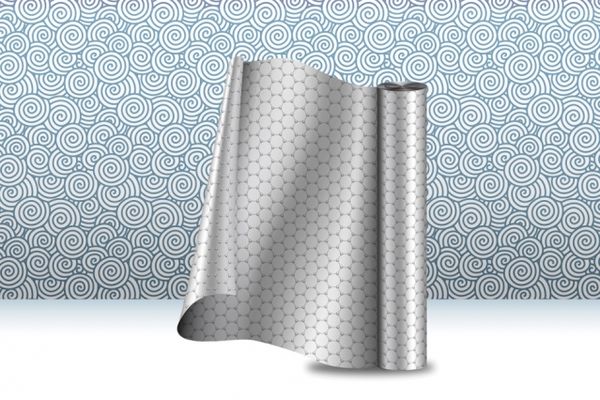
A graphene roll-out
"Scalable manufacturing process spools out strips of graphene for use in ultrathin membranes. MIT engineers have developed a continuous manufacturing process that produces long strips of high-quality graphene. The team’s results are the first demonstration of an industrial, scalable method for manufacturing high-quality graphene that is tailored for use in membranes that filter a variety of molecules, including salts, larger ions, proteins, or nanoparticles. Such membranes should be useful for desalination, biological separation, and other applications. “For several years, researchers have thought of graphene as a potential route to ultrathin membranes,” says John Hart, associate professor of mechanical engineering and director of the Laboratory for Manufacturing and Productivity at MIT. “We believe this is the first study that has tailored the manufacturing of graphene toward membrane applications, which require the graphene to be seamless, cover the substrate fully, and be of high quality.” Hart is the senior author on the paper, which appears online in the journal Applied Materials and Interfaces." [...]
Modelos 3D
Com a disponibilidade de ferramentas que permitem dar azo a nossa imaginação na criação de peças 3D e espaços como o thingiverse para as publicar, esta rubrica apresenta alguns modelos selecionados que poderão ser úteis.
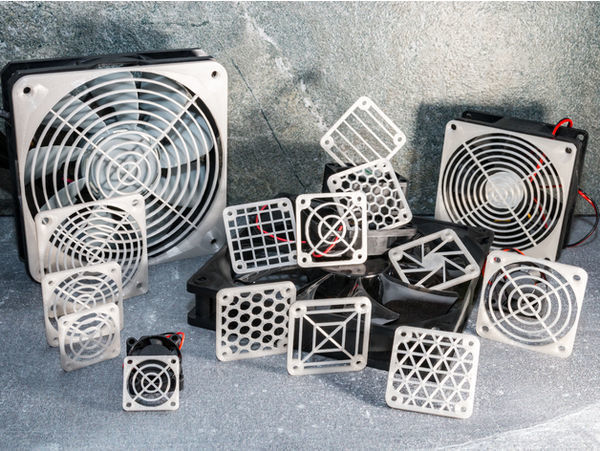
Customizable Fan Grill Cover
"I wasn't satisfied about the most of the fan covers available on thingiverse, because the finer details aren't optimized for 3D printing. That's why I designed this customizable fan cover, where you are able to use different settings to create your own fan cover. Check out the second picture for some of the available settings and the 3rd picture to sync the line size of the fan cover with the line width of your slicer. Use the Customizer or OpenSCAD to create your fan cover or use the pre-compiled fan covers as .stl-Files, optimized for 0.48mm line width (0.4mm nozzle). " [...]
Documentação
A documentação é parte essencial do processo de aprendizagem e a Internet além de artigos interessantes de explorar também tem alguma documentação em formato PDF interessante de ler. Todos os links aqui apresentados são para conteúdo disponibilizado livremente pelo editor do livro.
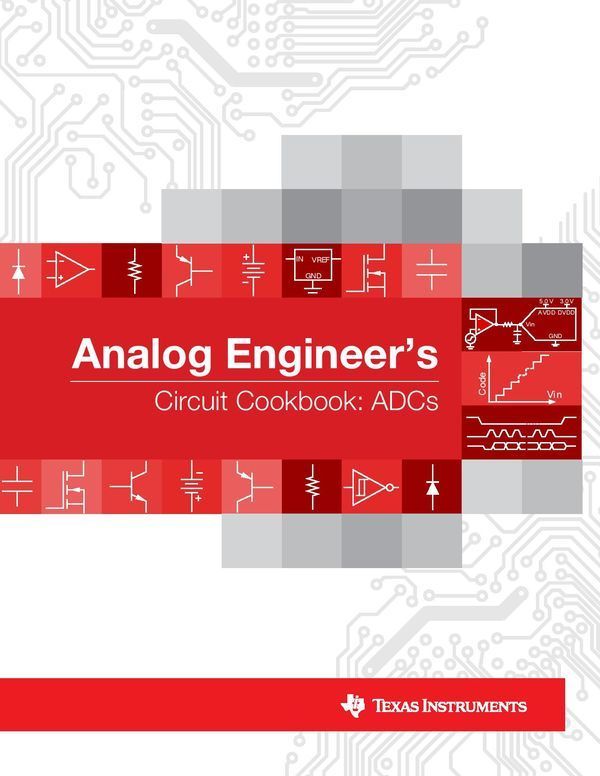
Analog Engineer Circuit Cookbook: ADCs
"The Analog Engineer’s Circuit Cookbook: ADCs provides analog-to-digital converter (ADC) sub-circuit ideas that can be quickly adapted to meet your specific system needs. Each circuit is presented as a “definition-by-example.” They include step-by-step instructions, like a recipe, with formulas enabling you to adapt the circuit to meet your design goals. Additionally, all circuits are verified with SPICE simulations and include links to the corresponding TINA-TITM SPICE circuits. We’ve provided at least one recommended ADC for each circuit, but you can swap it with another device if you’ve found one that’s a better fit for your design. You can search our large portfolio of ADCs at www.ti.com/ADCs. Our circuits require a basic understanding of amplifier and data converter concepts." [...]
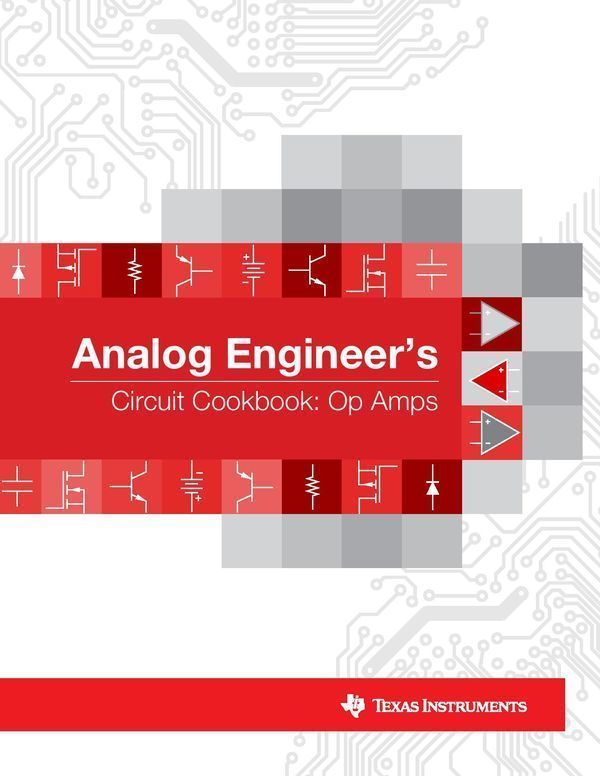
Analog Engineer Circuit Cookbook: Op Amps
"The Analog Engineer’s Circuit Cookbook: Op Amps provides operational amplifier (op amp) sub-circuit ideas that can be quickly adapted to meet your specific system needs. Each circuit is presented as a “definition-by-example.” They include step-by-step instructions, like a recipe, with formulas enabling you to adapt the circuit to meet your design goals. Additionally, all circuits are verified with SPICE simulations. We’ve provided at least one recommended op amp for each circuit, but you can swap it with another device if you’ve found one that’s a better fit for your design. You can search our large portfolio of op amps at ti.com/opamps. Our circuits require a basic understanding of op amp concepts." [...]
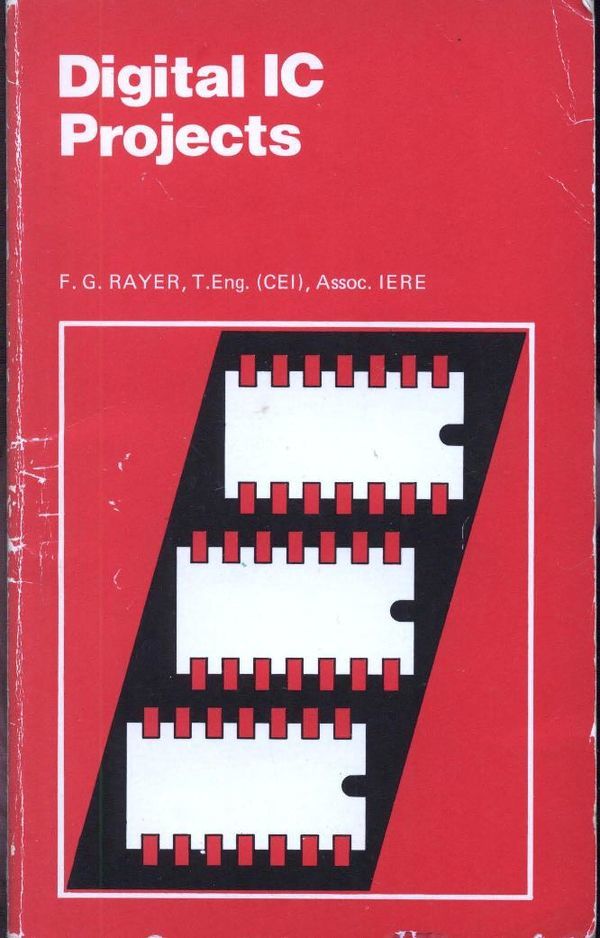
Digital IC Projects
"This book contains both simple and more advanced projects, and it is hoped that these will be found of great help in developing a knowledge of the workings of digital circuits. Various forms of assembling and wiring the integrated circuits on their boards are shown, and this aspect of a project can be quite straightforward, and not need the preparation of a printed circuit board. The more ambitious projects can be built and tested step by step, and this will avoid or correct faults which could otherwise be troublesome, and will result in a better understanding of how the devices operate. " [...]
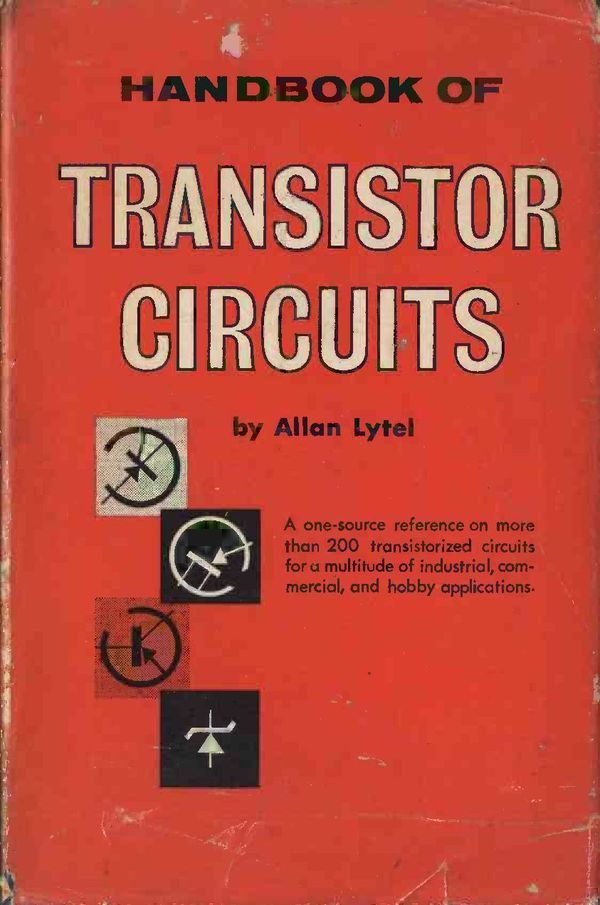
Handbook of Transistor Circuits
"This handbook describes in detail a wide range of electronic circuits designed around that tiny but versatile modern device, the transistor. The arrangements described have a great variety of practical uses. Some of these circuits derive their power solely from low - voltage battery sources; and have no connection of any kind whatsoever with the electric supply mains. " [...]
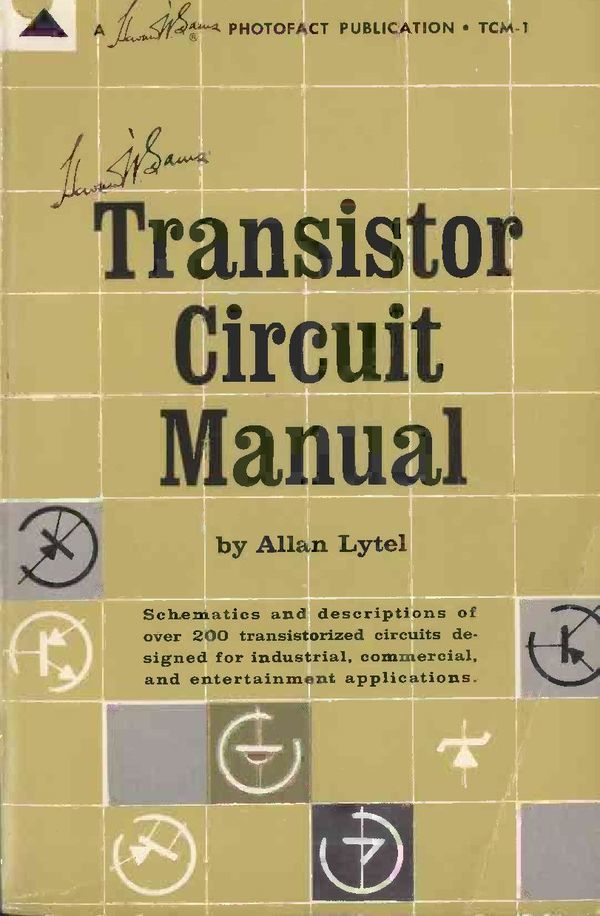
Transistor Circuit Manual
"With the rapid development in the field of transistors and semiconductors, a great need has arisen among engineers, technicians, and experimenters for data on circuit design and operation. The major sources for this data, until now, have been the semiconductor manufacturers themselves. The need for a one -source reference manual thus becomes readily apparent. Inasmuch as new circuits are being developed almost daily, no single volume could possibly encompass them all. This handbook, therefore, follows the practical approach of including typical designs for general applications in industrial, commercial, and entertainment devices. In each of the 15 specific circuit categories, schematic diagrams, including notes on parts values and component parameters, are accompanied by text discussions which describe circuit operation, typical applications, and modifications necessary to satisfy specific requirements." [...]
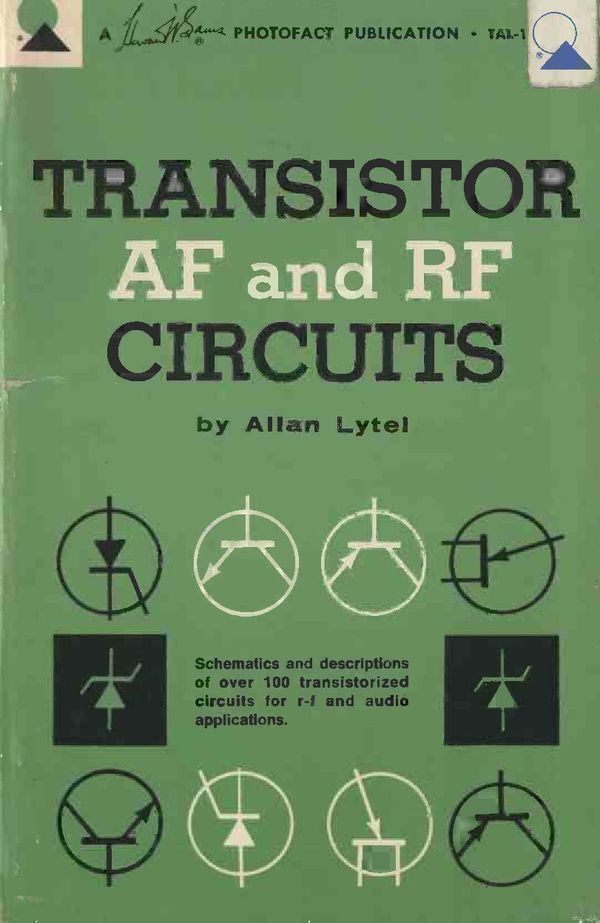
Transistor AF and RF Circuits
"The use of semiconductors in electronic circuits has, and still is, growing at a rapid rate. Experimenters and hobbyists are continuously looking for transistor circuits to construct. This book is a compilation of many r -f and audio circuits using transistors. In each of the five sections of the book, you will find schematics, parts lists, and discussions of operation of many of the circuits. In addition, an introductory section provides general information on the construction of the circuits. and includes a table of parts manufacturers." [...]
Projetos Maker
Diversos Projetos interessantes.
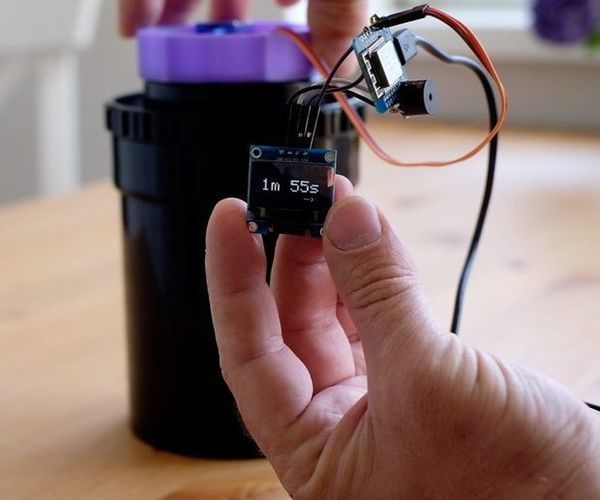
Spinmatic! - Automated Film Development
"It is true though, as much as I love film and development, twisting a spindle for 11 minutes or 20 minutes seems a complete waste of anyone's time. This is where the 'Spinmatic' comes to save the day, so you can have perfect timely development and rest after a long days shoot! The Story Awhile back I saw this idea from another photographer Lilly Schwartz . I thought that it was a really clever piece of trickery. It must have been about a year ago I first saw her write up and instructions. So a few weeks ago I managed to have some precious time to purchase, build and learn a bit about 3D printing." [...]
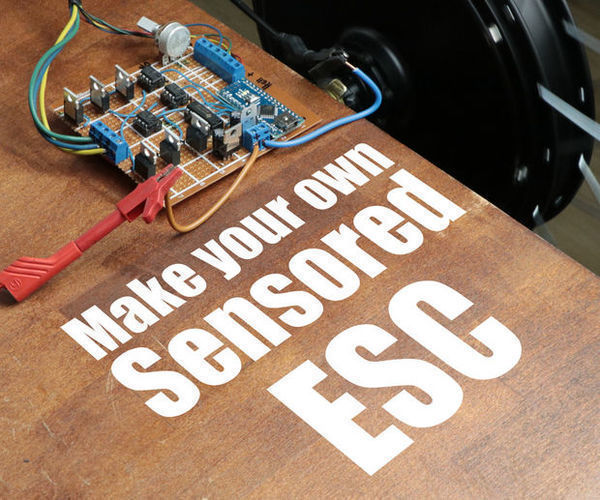
Make Your Own Sensored ESC
"In this project I will show you how a sensored BLDC Motor from an electric bike works and how we can create our own sensored ESC in order to let it rotate. Let's get started! " [...]
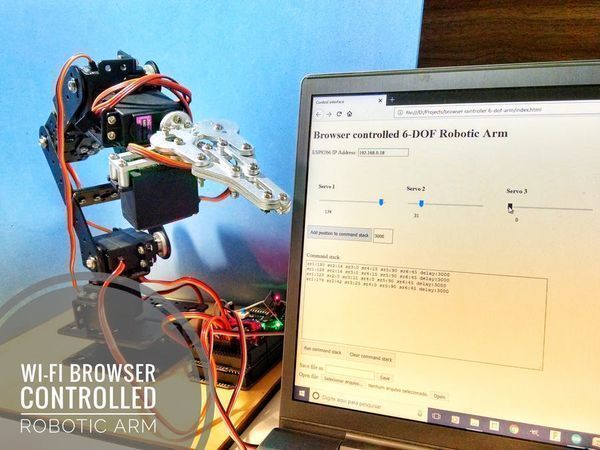
Wi-Fi Browser Controlled Robotic Arm
"Control your robotic arm remotelly using an ESP8266 WiFi module, from a simple html interface! Robotic arms kits are getting cheaper and cheaper. You can find different models online and try different methods to control them. This project is part of a series of tutorials in which I explore different methods for controlling a robotic arm. In my previous experiment, I used a Nintendo Wii Nunchuk to control a 6-joint robotic arm. You can find it here: https://www.hackster.io/igorF2/nunchuk-controlled-robotic-arm-with-arduino-b1c0fa This time I wanted to control it remotelly using an cheap ESP8266 WiFi module." [...]
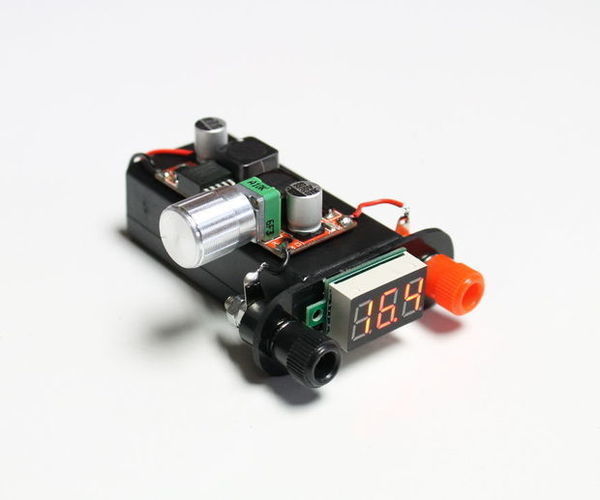
Portable, Variable Power Supply
"Ive been a bread board a lot lately to make electronic projects and wanted to come up with a small, portable power supply. After a bit of rummaging through my spare parts I managed to find all of the bits needed to build one! This is a simple project but has been invaluable in powering my circuit projects. You only need a handful of parts and some basic soldering skills to make your own and if you tinker with circuits and electronics, youll find this little, portable power supply come in handy. The power can vary from 2 volts to 25 volts and has a potentiometer to allow you to change the voltage easily. I also wanted to be able to change the ends of the testing wires for different projects so also added banana plugs to be able to swap and change." [...]
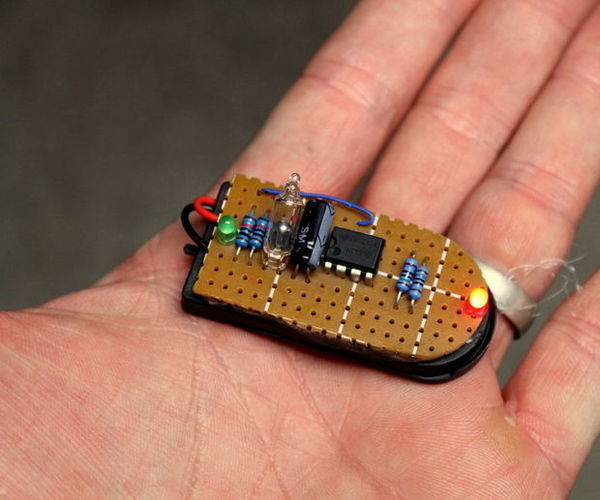
Executive Decision Maker
"Ever had to make a decision by flipping a coin? Well the Executive Decision Maker takes that to another level! Based around the ever popular 555 timer, the Exec Decision Maker will help you make all those tricky decisions with the blink of an LED. Need to decide whether to eat out or just stay in leave it up to the Exec Decision Maker. Want to work out what movie to watch the Exec Decision Maker can do that for you too. Pocket sized, portable and fun just follow this ible to make your own." [...]
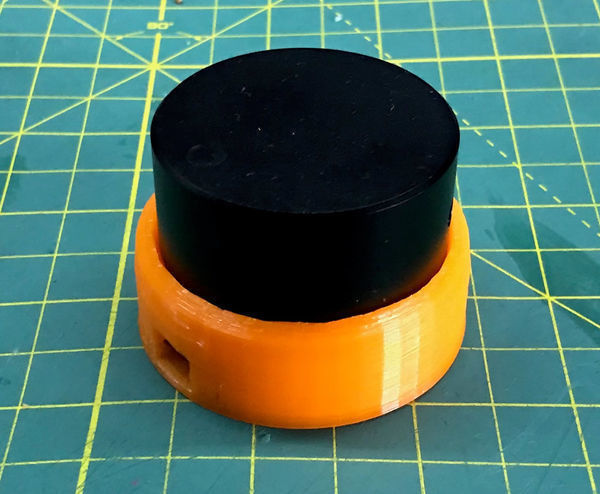
USB Dial
"This is another one of those “did it because I can” projects. It’s a USB dial that uses a Teensy 2.0 Arduino unit at it’s core and allows me to emulate my mouse. I use TinkerCAD avidly to design my 3D printed models. Even though I have a mouse I wanted the dial to quickly rotate and zoom in/out on my designs. With both the dial and mouse co-existing, it allows for faster manipulation of the workspace. The Dial handles workspace manipulation while the mouse handles the parts." [...]
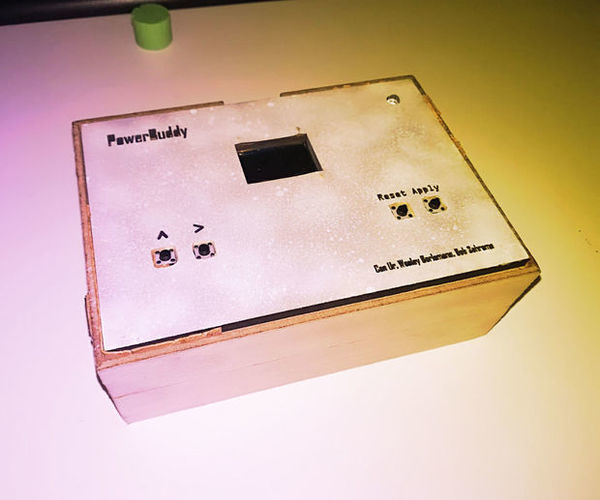
DIY -Prototype- Arduino Timed USB Charger
"During our seminar about arduino we had to invent a happy hack featuring arduino. We decided on making a device that would cut power from charging devices using some code for arduino. The Powerbuddy! This prototype doesnt actually charge devices as the arduino doesnt supply enough power, but might be very useful for someone capable with transistors to complete. In this instructable you'll learn how to make this prototype that will connect and disconnect charging devices.You will also learn how to setup a user interface for the timer using an OLED mini display! WARNING: the device did not work for us." [...]
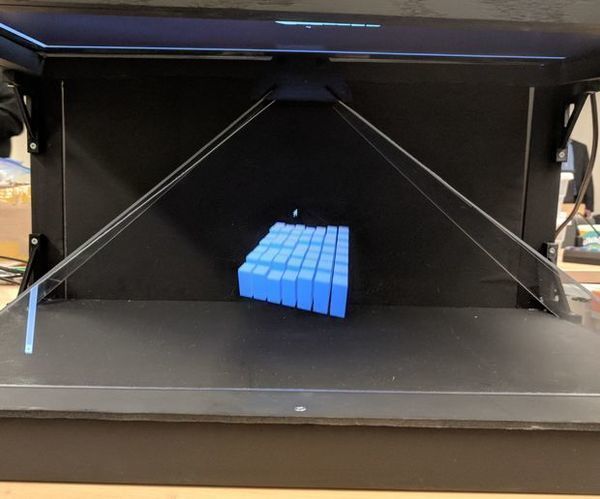
Hologram Projector With Pi
"This was a project created for an Robotics class. It was done following another instructable page https://www.hackster.io/hackerhouse/holographic-au... It uses a Raspberry Pi, along with a computer, and monitor to create a 3D hologram that projects an image along with a musical playlist. " [...]
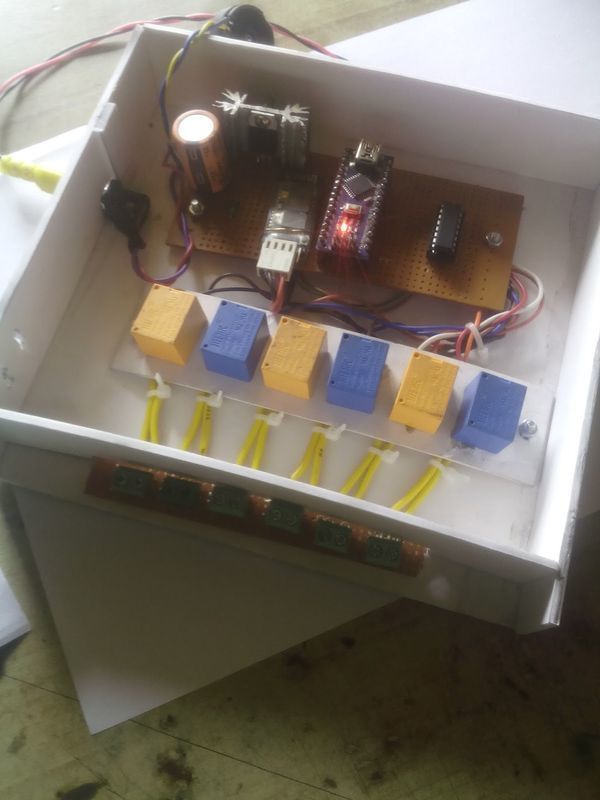
Arduino Home Automation
"Home Appliances is now controlled by Arduino and Bluetooth this is totally possible. Now just download Arduino Home Controlling App on Your Smartphone and enjoy. This is very simple and easiest project to make. You need some electronics like Arduino UNO or Nano you choose , ULN2003a IC, HC-05 Bluetooth Module,12v Relays and some more small things and the total price is 15$ .So you can control your any 6 appliances but do not use Air Conditioner, Fridge ,Heater because this is more powerful things but if you are plugging more powerful relay so that is possible. HC-05 Bluetooth module range 5 to 6.5 meters. First make this project ,second connect to your switch board and enjoy." [...]
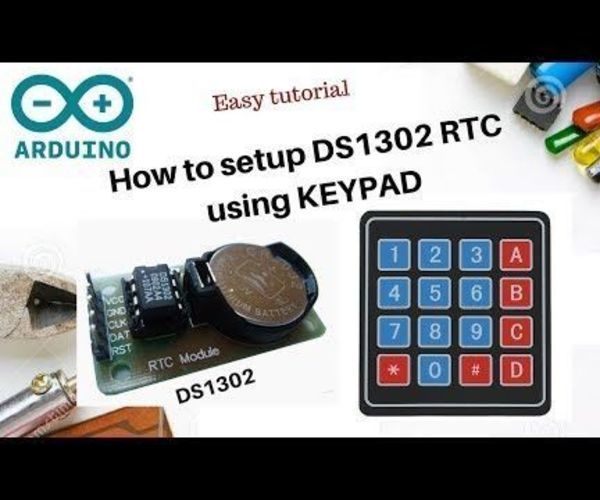
Setup DS1302 RTC Module With Keypad + Arduino + LCD
"Hello, I just made this little project, I hope you like it, as the title says it's about how to use a keypad to set the DS1302, it's one of the basic projects you can add it to your own project if you want to add other modules or functions... It's very easy to understand and adaptable, I hope you like it and find it useful. Watch the video above if you need further help, or ask in a comment it's a pleasure. " [...]
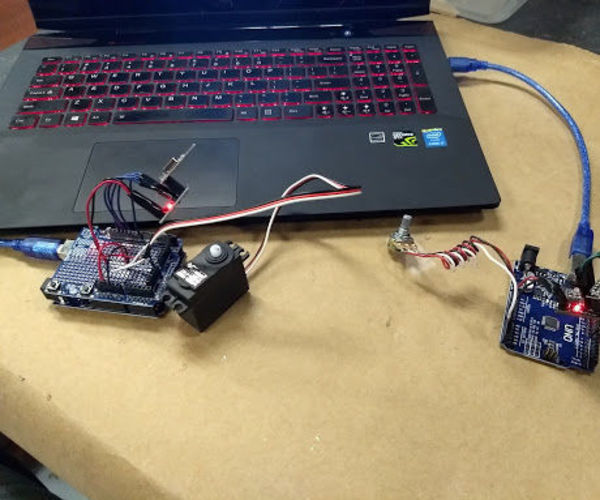
Wireless Servo Control
"This project controls the rotation of a servo wirelessly by means of a potentiometer (knob). The rotation is constrained to 180 degrees. " [...]
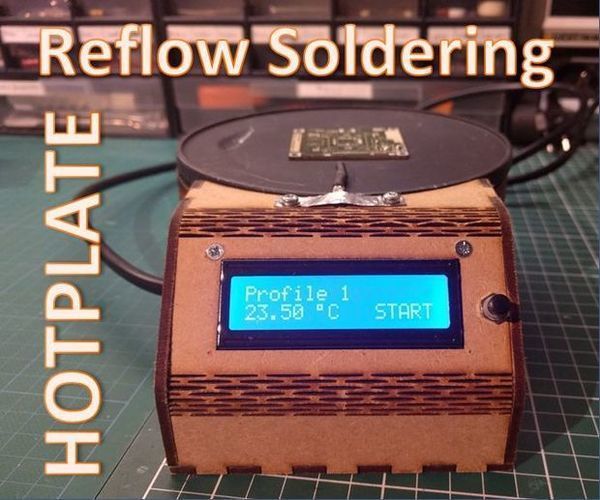
Reflow Soldering Hotplate
"Soldering tiny SMD components can be quite challenging, but the process can also be automated. This can be done by applying soldering paste and baking it, either in a (reflow) oven or on a hot plate (like a cooking plate in your kitchen). Around the web, I've seen many DIY reflow ovens; in my opinion they have one big downside: they take up a lot of space. So I decided to build a hotplate instead. The hotplate is fully programmable, so that any reflow profile can be added. The reflow process is then fully automated." [...]
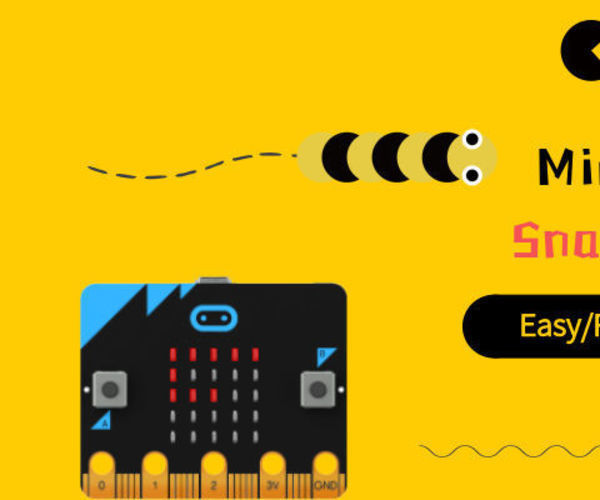
Micro:bit Snake Game
"Anyone remembers the Snake game that used to come with old Nokia phones? This micro:bit version in glorious 55 resolution is easy to make and fun to play! " [...]
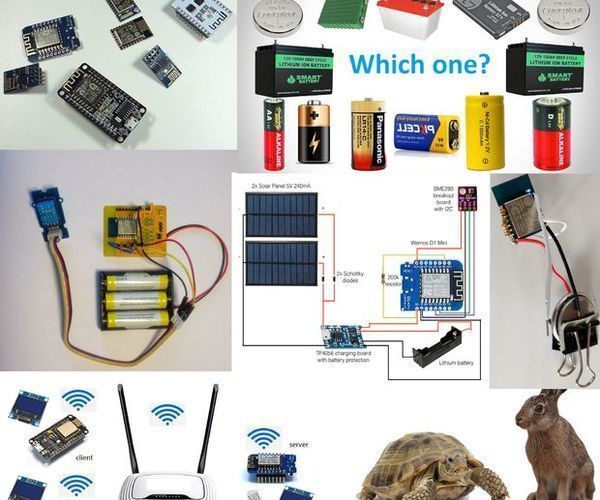
Pro Tips for ESP8266
"I am sure, every maker and hobbyist are familiar with ESP8266 and I hope you also have some previous hands-on experience with the ESP8266 wifi transceiver. In this Instructable, I am not going to discuss the basic, how to get started etc. You will find tons of tutorials on the internet about these. If you want to develop a professional product using ESP8266 this instructable is for you. In this instructable I am going to discuss: 1. How to configure wifi credentials on the runtime without hardcoding 2." [...]
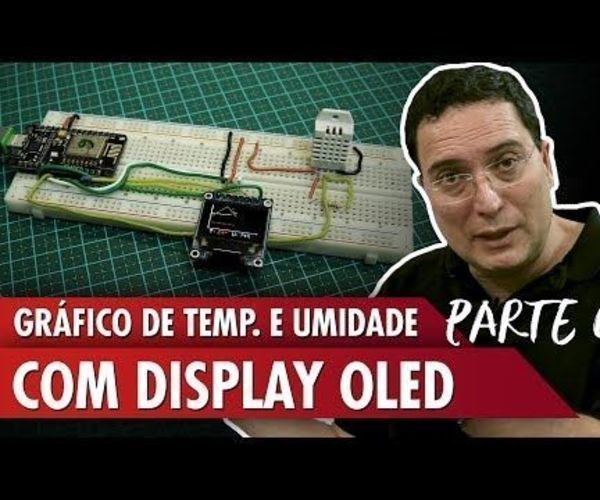
Temperature and Humidity Chart With OLED Display
"Today, we are going to discuss about a digital thermometer that displays information concerning temperature and humidity, which are read by a sensor and stamped on a color chart, all in real time. In this Project, I explain the use of the serial OLED display, which is a 2c display that enables the printing of data using an AM2302 DHT22 sensor, with a NodeMCU ESP8266. In this video, therefore, we have the DHT22, an old and well-known temperature and humidity meter, which sends the collected data to be printed on the display. This will be shown in a colored chart, as in the photo above. " [...]

GamePi XS - the Plug'n'Play Emulation Station
"Intro: This instructable describes the build of a Raspberry Pi Zero W powered console all within a SNES controller. It can be used on any display with HDMI. It is powered by a smartphone Lithium Ion battery which lasts up to 3 hour (depending on the emulator running). Note: Please note that English is not my first language. If you find any mistakes or something is not clear feel free to tell me and I'll try to fix it. Same goes for general mistakes." [...]
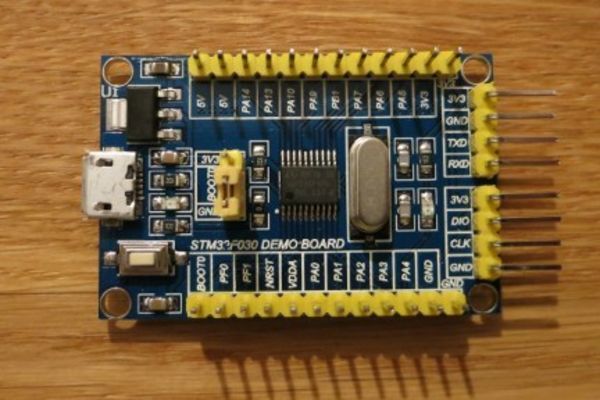
Go on very small hardware (Part 1)
"How low we can Go and still do something useful? I recently bought this ridiculously cheap board: STM32F030F4P6 I bought it for three reasons. First, I have never dealt (as a programmer) with STM32F0 series. Second, the STM32F10x series is getting old. MCUs belonging to the STM32F0 family are just as cheap if not cheaper and has newer peripherals, with many improvements and bugs fixed. Thirdly, I chose the smallest member of the family for the purpose of this article, to make the whole thing a little more intriguing." [...]

Arduino LED Bonsai Tree
"An Arduino Uno controls a bunch of neopixel LEDs that are mounted on an tree shaped metallic structure. The setup also includes a Bluetooth receiver to automatically turn on the animation via an Android app (Tasker). " [...]
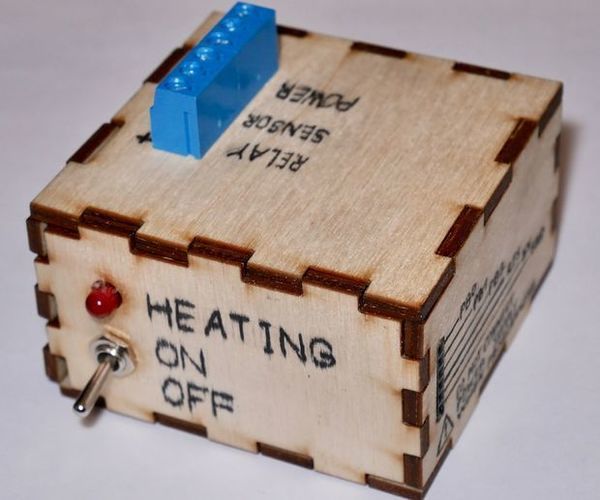
PID Temperature Controller
"My friend is building a plastic extruder for plastic recycling (https://preciousplastic.com). He needs to control the extrusion temperature. For that purpose he is using a nozzle heater band. In this nozzle, there is a thermocouple and a heating unit which allow us to measure the temperature and finally reach the desired temperature (make a retroaction loop). When I heard that he needed to by several PID controllers to control all these nozzle heater bands, it immediately gave me the desire to try to make our own. " [...]
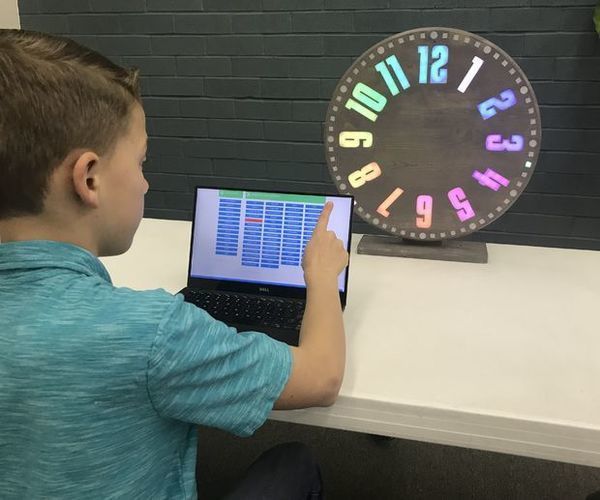
Web-Connected SMART LED Animation Clock With Web-based Control Panel, Time Server Synchronized
"The story of this clock goes back a long way - more than 30 years. My father pioneered this idea when I was just 10 years old, long before the LED revolution - back when LED's where 1/1000 the brightness of their current blinding brilliance. A true innovator, he coded in assembly language and hand wired each individual LED (an impressive feat of patience and determination)! His original version still works to this day. I wanted to pick it up where he left off and leverage the advances in technology to make a beautiful clock that was web-connected, colorful, fun to play with and full of interest. It's advanced to the point where we would like to release the clock to the public as an open source project but also provide finished products to those interested in purchasing." [...]
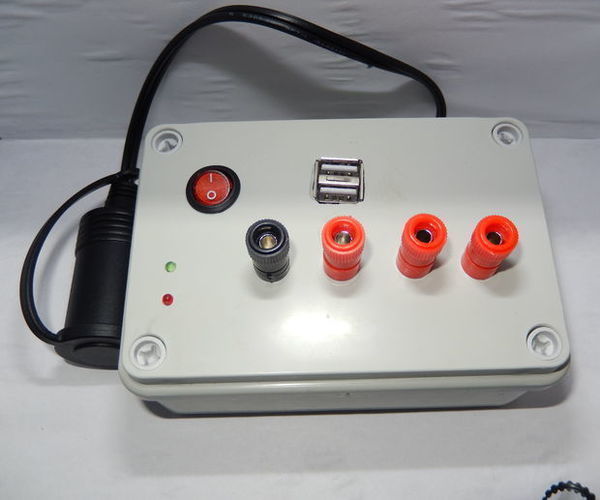
Small, Powerful and Cheap Bench Power Supply From ATX Power Supply
"Cheap, easy, powerful and AWESOME power supply. You won't need too much components and its for beginners. When I said powerful, I mean a really powerful. My ATX PSU can give from 12V 10A, from 5V 10A and from 3,3V 12A which is a lot, but you can have even more powerful one (I had only this one available). As I said its very easy, simple and cheap (for me it cost about 15$, because I had the ATX power supply for free) skills: basic soldering some patience (some things are hard and frustrating) and drilling" [...]
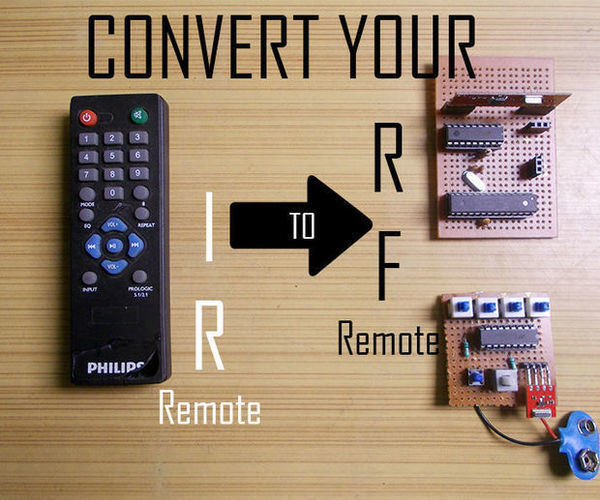
Convert Your IR Remote to RF Remote
"In today's Instructable, I'll show you how you can use a generic RF module without a microcontroller which will eventually lead us to build a project where you can convert an IR Remote of any device to a RF Remote. The main advantage of converting an IR Remote to RF, is that, you don't have to point the remote before pressing the buttons for the device to work. Also, if you have a device that is not always in range of the remote, like a home theater in the corner of a room, this RF Remote will make your life easier. Let's get started. " [...]
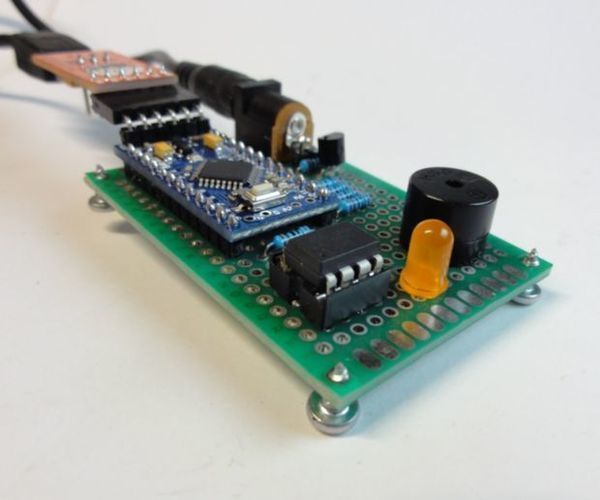
IOT123 - HV ATTINY85 Fuse Resetter
"There are many versions of the ATTINY85 Fuse Resetters on the NET. This is based on the work of Arduino (blog, the above schematic) and Ralph Bacon (GIT, Youtube video above). The main benefit of this device is sacrificing the reset pin on an ATTINY85 for use as a GPIO. The main differences with the previous builds are I embed a dedicated Arduino Pro Mini and give a simplified build instruction. My desk real estate is precious and I did not want to dedicate an UNO for this infrequent process. A separate 12V power supply is needed." [...]
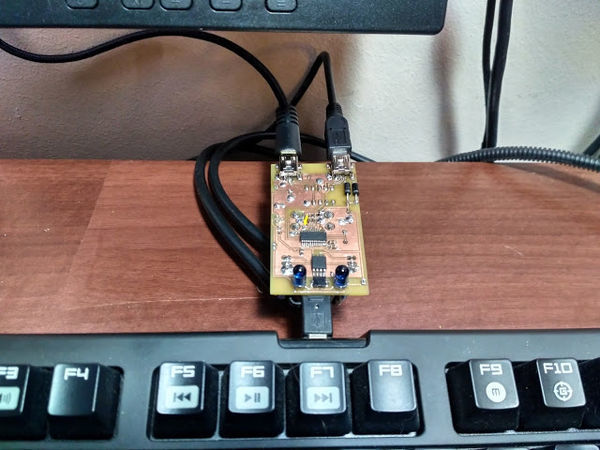
DDC I2C KVM with mouse + keyboard controlled by hand gestures
"The goal Make a device to switch mouse+keyboard between computers and change video input in monitors at the same time. Usability Huge! Everything what normal KVM gives without real hardware KVM. Parts Main device 1 x Attiny45 2 x IR emitting diodes 1 x BP104 (PIN photo diode) 1 x FE1.1s (4 port hub) 1 x A5W-K relay 1 x BC327 1 x dual USB sockets 2 x single mini USB sockets 2 x 3-pin headers 2 x IN4001/4 diodes (for power) 1 x IN4001/4 or other diode (for relay) 2 x 470uF electrolytic condenser 1 x 1k resistor (0603) 2 x 680 ohm or 1 x 330 ohm resistor (0603) 1 x 10 ohm resistor (normal size) 1 x 2k7 resistor (for FE1.1s REXT) (0603) 1 x 12 MHz crystal (for FE1.1s XOUT/XIN) 1 x 4.7uF for FE1.1s VD33 decoupling 1 x ?? (probably 4.7uF) for FE1.1s VD18 decoupling VGA - VGA adapter 2 x VGA male sockets 2 x VGA female sockets 2 x 4.7k resistor (smaller size) 2 x 10 ohm resistor (smaller size) TL;DR; I'm injecting DDC commands via VGA i2c pins, to change active input on the monitors and at same time with small relay I'm replugging usb hub from server to laptop and vice versa. Keyboard and mouse is connected to the hub." [...]
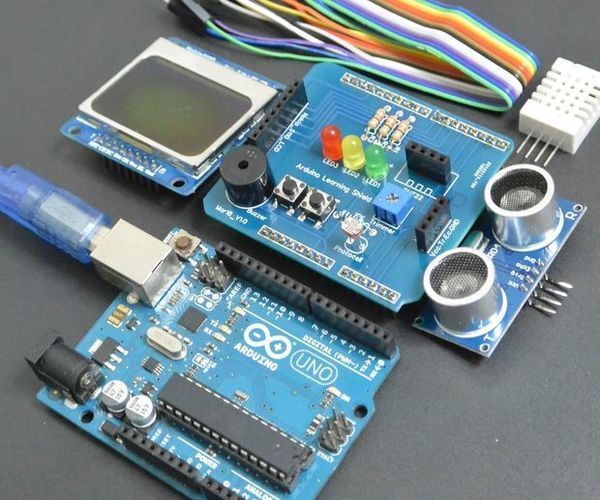
Arduino UNO Learning Shield by Ardumotive
"In this guide I will show you how to make your own Arduino learning shield. This learning shield can be useful at schools, universities and to everyone that want to start dealing with the Arduino. With this shield you will learn how to read the temperature and humidity from DHT-22 sensor, read an object distance by using the HC-SR04 ultrasonic sensor, print sensor values to the NOKIA 5110 LCD. On this PCB board you will also find three LEDs, two buttons, buzzer, trimmer and photocell sensor! Bellow you will find the PCB layout so you can easily produce it. " [...]

Display Commute Time on LCD Using Raspberry Pi
"Display estimated commute time between two locations based on traffic and historic data on a character LCD using Raspberry Pi. Display real-time estimate of commute time between two locations based on traffic and historic data on a Character LCD using Raspberry Pi, Python 3 and Google Maps Distance Matrix API. If you have a LCD and a Raspberry Pi lying around or want to purchase one or if you are often late for work like me and want to have a traffic monitor then this project might be for you. " [...]

ESP8266: How to Monitor Temperature and Humidity
"In today's tutorial, we will use an ESP-01, which is the ESP8266 in configuration 01 (with only 2 GPIO), for temperature and humidity readings of the DHT22 sensor. I will show you an electrical schematic and the ESP programming part with an Arduino. The example is simple, easy to understand, and also comes with the PDF used in the video to aid in assembly. In the design, we have then the ESP01, the source that converts 110 or 220 into 5 volts, a voltage regulator of 3v3, and the DHT22, which is the sensor. On the smartphone screen, you will have the local IP address in addition to the JavaScript code provided by the ESP. This screen will therefore receive the parameters of temperature and humidity and will print these values, which will be updated every five seconds." [...]
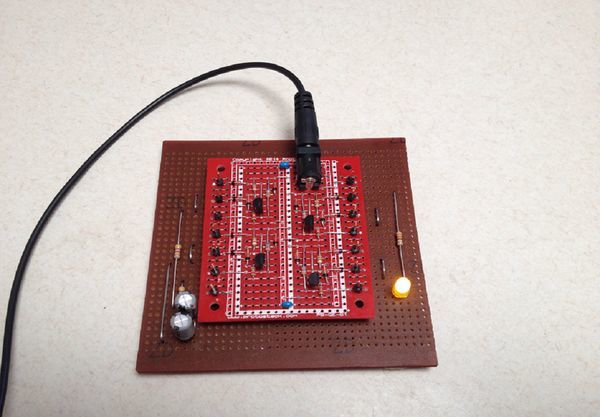
A Discrete Transistor 7400 NAND GATE
"If we did not have ICs then this is what a 7400 NAND gate would look like! The 7400 TTL (and LS-TTL) quad NAND gate is one of the most common integrated circuits (IC) around. Here is a discrete transistor version. To show that it works it is used as an LED flasher. " [...]
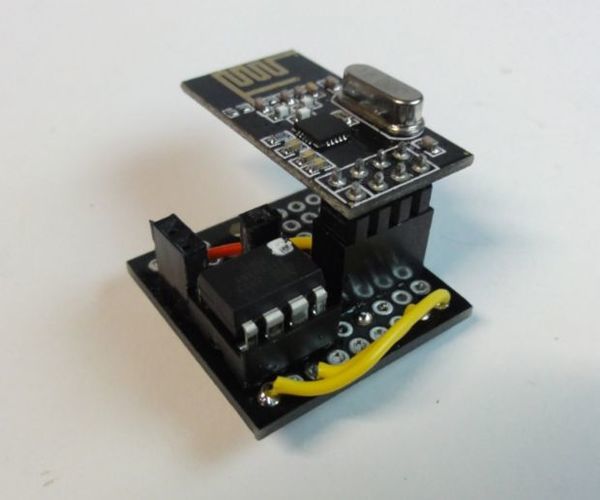
IOT123 - 5Pin Attiny85 Nrf24L01 Brick
"The IOT123 BRICKS are DIY modular units that can be mashed up with other IOT123 BRICKS, to add functionality to a node or wearable. They are based on the inch square, double-sided protoboards with interconnected through holes. This BRICK adds 2.4GHz RF connectivity to a master for IOT node data aggregation. It is not very flexible as it only offers one pin, but it is a good starting point and more energy efficient than the 3Pin circuit that I am heading for. This BRICK will have a BATTERY BRICK, a POWER BRICK and a HEADER BRICK developed that can either be soldered or header joined. " [...]
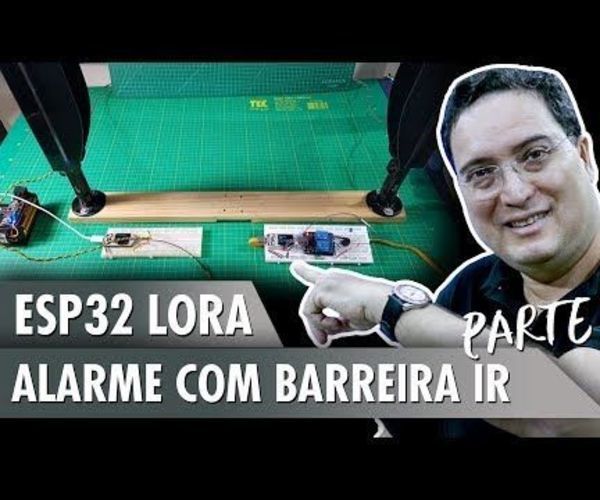
ESP32 LORA - Alarm With IR Barrier
"Considering that it offers a solution to many current problems, today I am continuing the discussion concerning the ESP32 LORA, a marvel for this Internet of Things world. In this article, I deal again with safety when discussing an infrared (IR) barrier alarm. Our project is formed by two communicating ESP32 LORAs. One will be the ISSUER and will be connected to the infrared barrier sensor. The other, the RECEIVER, will be connected to a relay module. Each second, the ISSUER sends a code to the RECEIVER with the current state of the barrier." [...]
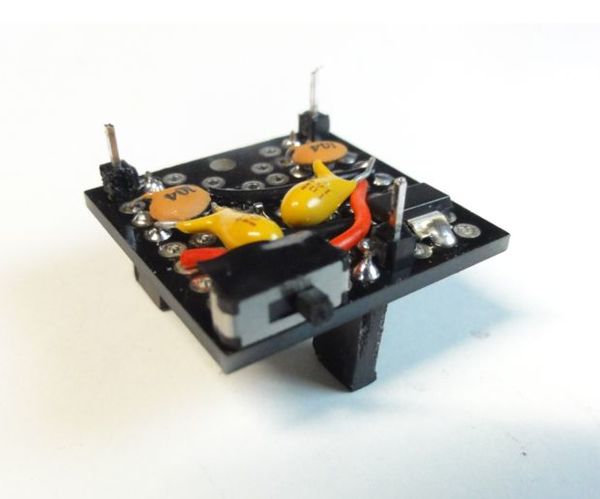
Iot123 - 3.3V Power Brick
"The IOT123 BRICKS are DIY modular units that can be mashed up with other IOT123 BRICKS, to add functionality to a node or wearable. They are based on the inch square, double-sided protoboards with interconnected through holes. Although the instructions relate to a semi-permanent bond between the BRICKS, the male pin joiner described here can be swapped for a pair (male on consumer/female on provider) of header pins for easy assembly. Also the pin contract (position and meaning of interconnecting pins) relates to the ATTINY85 NRF24L01 BRICKS, but can be modified to suit any other IOT123 BRICK contract. A switch is sandwiched between the 2 PCBs and the +ve/GND pin are exposed for consumption by other BRICKS. The power input is expecting 5V DC through the MicroUSB socket, which is smoothed/cleaned with capacitors and is output as 3.3V with an AMS1117 regulator." [...]

ESP8266 Wemos Clock Scrolling Weather News and More
"Scrolling weather, news headlines, clock, 3D printer status, and more. All managed through a web interface. Story I have been working on this project since November 2017 and have been enjoying it so much that it is time to share it. Required Parts: Wemos D1 Mini: https://amzn.to/2qLyKJd Dot Matrix Module: https://amzn.to/2HtnQlD Source Code under the MIT License is available here: https://github.com/Qrome/marquee-scroller Thingiverse Files for the Marquee Scroller: https://www.thingiverse.com/thing:2867294 Features Displays the following every 60 seconds: Accurate Clock refresh off Internet Time Servers Local Weather and conditions (refreshed every 10 - 30 minutes) News Headlines from all the major sources Configured through Web Interface Display 3D print progress from your OctoPrint Server Option to display random goofy advice" [...]
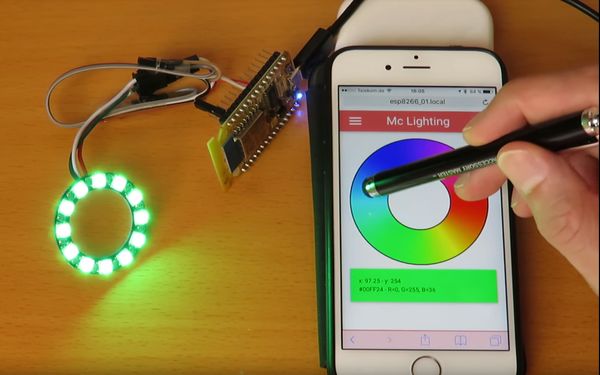
Mc Lighting
"The ESP8266 based multi-client lighting gadget Mc Lighting (the multi-client lighting gadget) is a very cheap internet-controllable lighting solution based on the famous ESP8266 microcontroller and WS2811/2812 led strips. It features a self-hosted responsive web-interface, a REST-API and a websocket connector. Because of it's open architecture and APIs it's easy to build new clients for different platforms (iOS, Android, Windows Universal Apps, Siri/Cortana integration, ...). This project was born for a talk at the PiAndMore conference. I just wanted to show the capabilities of an ESP8266. So I built a smart lighting gadget with the ESP and a NEOPixel strip that supported multiple protocols: REST WebSocket MQTT It also has a captive portal to setup your WiFi." [...]
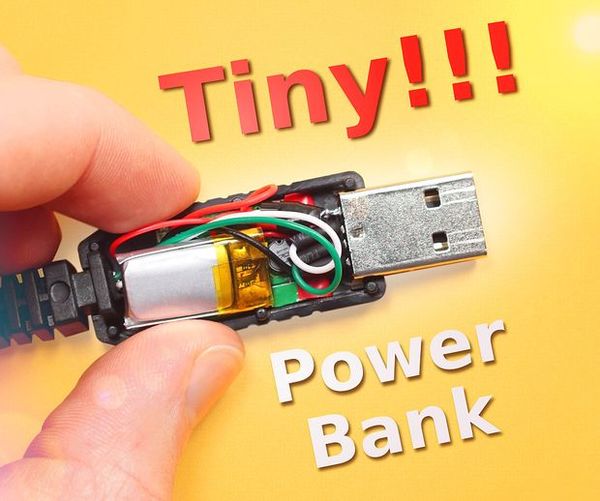
Power Bank Inside a USB Cable
"In this instructable I show you how to make power bank hidden inside USB cable. Main point of this project, make cable witch can jarg small devices such as: smartwatches, wireless headphones or prank your friends also save data transferring capabilities. Parts for this project you can find lying in your house, for example: reuse broken USB cable, battery from old Bluetooth headset or tiny RC helicopter, salvage charging board from chip single cell power bank (today you can find them almost everywhere). Lets go Started. " [...]
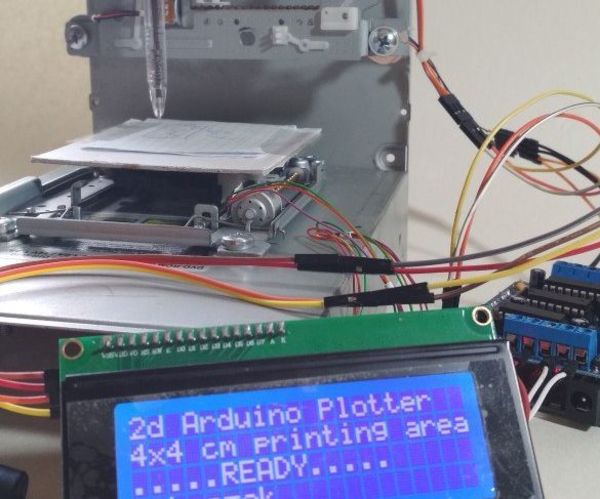
2D Arduino Plotter (arduino Uno, L293d, Cd-roms, Servo, Cd)
"In this tutorial we will make 2d arduino plotter. " [...]

ESP32 LoRa With Arduino IDE: Send and Receive TX RX
"Following suggestions from my YouTube channels followers, we will talk about the ESP32 LoRa again today. However, this time well discuss sending and receiving data by the same device. In this situation, an ESP32 LoRa, the Master, will send a packet warning that it wants to receive the data, while another device, the Slave, will wait for the command to send the data back to the Master. This is unlike other videos I've done that featured an ESP32 LoRa as Sender and another as Receiver, as today we will have the same device, the Master, that will send and receive data. " [...]
That's all Folks!


